




















We enable an inclusive environment for enhanced career prospects, focusing on accelerating equal opportunities for all.
At Namdeb, we are about more than mining. We are about mining for good.




Editor Elzanne McCulloch elzanne@venture.com.na
Content Director
Kirsty Watermeyer kirsty@venture.com.na
Sales
Daleen Small daleen@venture.com.na
Layout & Production
Liza Lottering liza@venture.com.na
Admin and Enquiries
Bonn Nortje bonn@venture.com.na
Printing John Meinert (Pty) Ltd
Venture Publications (Pty) Ltd. PO Box 21593
Windhoek Namibia
Disclaimer:
Please note that while every effort has been made to ensure the accuracy and reliability of the content within this magazine, Venture Publications Pty Ltd and FlyNamibia accept no responsibility for any errors or omissions. The views expressed by individual authors are solely their own and do not necessarily reflect those of the publisher or FlyNamibia. All material, including text and images, is the property of its respective authors and cannot be reproduced or used without explicit permission from Venture Publications Pty Ltd.
At Venture Media, we’re more than just a publisher - we’re a multi-media content creation powerhouse. Our expertise includes awe-inspiring photography, striking videography, impeccable design, and crisp podcasts. With a reputation for excellence spanning three decades, we bring unparalleled storytelling to life.
In our boutique publishing and content marketing house, stories that matter take center stage. Every page you turn reflects our commitment to quality and innovation. Dive in and experience the difference that top-tier content creation can make.



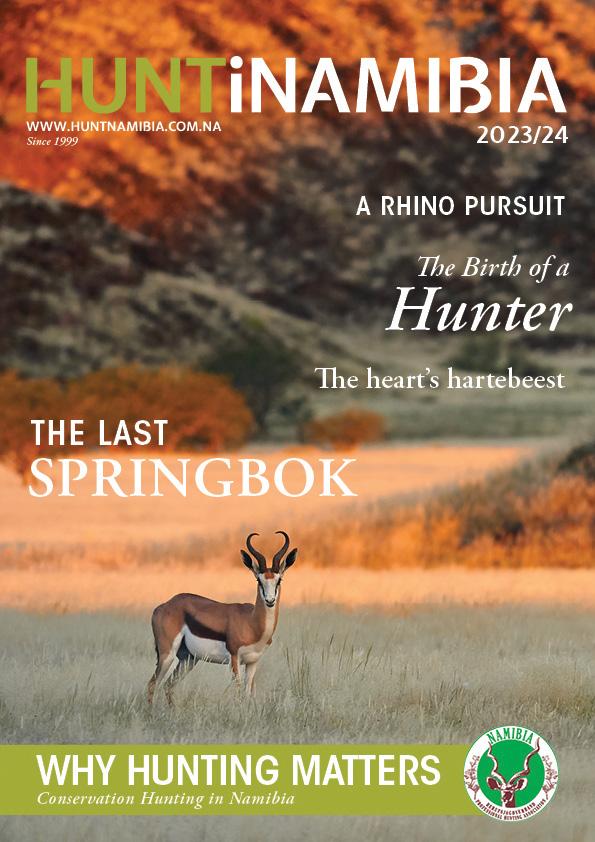









Kirsty Watermeyer
Media and communication consultant, storyteller and writer. A Multi-media producer, presenter, voice artist and curious wellbeing enthusiast.


David Bishop Media commentator and critic, climbing wall owner, voracious reader, sometime writer, active lifestyle proponent, family man, and coffee

Rukee Kaakunga A Windhoek-based communications specialist, blogger and freelance fashion writer. Contact her via email: rukeekaakunga@gmail.com

Martha Asheeke
Visual Artist, Creative Writer, Social Media Specialist, and Graphic Designer, blending creativity and strategy to tell impactful stories through selfexpression.



Eric van Zyl The Managing Director Designate at IJG Securities. He holds a BCom degree from the University of Stellenbosch and is a CFA charter holder.

Charene Labuschagne Art director, writer and presenter, she tells stories out of pure necessity for expression. Namibia is her favourite subject. Maggie Forcelledo Paz




Select which tickets you would like to purchase: destinations, travel dates, morning/afternoon departure. We offer multiple fare options such as: Saver, Classic or Premium
Please enter names as they appear on passport or travel documentation
LOGIN to upload passenger details from previous booking.
More options for the perfect trip
Baggage policy, sporting equipment, over weight luggage or to add an additional bag(s)
Cash payment at: Eros Airport, Ondangwa Airport, Oranjemund Airport
Online card transaction
Electronic Funds Transfer (EFT)
PayToday app Buddy SuperApp
Online check-in opens 24 hours before departure of the flight on Fly Namibia
Check-in opens 1h 30min before domestic flight and 2 hours before international flight.
Check-in CLOSES 30 min prior to domestic flight and 50 min prior to international flight.
flight information / rules
Read up on all our additional information regarding terms and conditions, and tick the selection box once completed to continue.
Fill in your payment details in our DPO paygate to make final payment.
Transaction confirmation will be sent to passenger email entered.
Windhoek Eros Airport Office
Ondangwa airport office
Rundu airport office
Katima Mulilo airport office
Hosea Kutako airport office
All major travel agents
Items NOT allowed in hand luggage:
Lotions and aerosols above 100ml, flammable aerosol, sharp objects, i.e. nail files, nail scissors, Leatherman, matches.
20kg Per person





06:30
08:00

Eros - Windhoek Ondangwa - Toivo Ya Toivo 07:30 Mon, Tue, Fri
Ondangwa - Toivo Ya Toivo
Eros - Windhoek 09:00 Mon, Tue, Fri
16:20 Eros - Windhoek Ondangwa - Toivo Ya Toivo 17:20 Tue, Wed, Thu, Fri, Sun
17:50
Ondangwa - Toivo Ya Toivo
Eros - Windhoek 18:50 Tue, Wed, Thu, Fri, Sun
10:15 HKIA - Windhoek Katima Mulilo 11:40 Wed, Fri, Sun
12:55 Katima Mulilo
HKIA - Windhoek 14:15 Wed, Fri, Sun
Oranjemund flights on hold from 23 September 2024 onwards
09:40 Eros - Windhoek Oranjemund 10:40 Mon, Fri
11:20 Oranjemund
Eros - Windhoek 12:20 Mon, Fri
Lüderitz flights on hold until further notice
13:00 Eros - Windhoek Lüderitz 14:00 14:40 Lüderitz Eros - Windhoek 15:40 DEPARTURE FROM TO ARRIVAL
From 3 July 2024 - 31 October 2024
11:55 Maun (via MPA) HKIA - Windhoek 14:15 Wed, Fri, Sun
in Partnership with

14:00 Cape Town Walvis Bay 16:15 Mon, Tue, Wed, Thu, Fri, Sun
16:50 Walvis Bay Cape
Bay
06:20 Cape Town HKIA - Windhoek 08:35 Mon, Tue, Wed, Thu, Fri
09:25 HKIA - Windhoek Cape Town 11:35 Mon, Tue, Wed, Thu, Fri
10:45 Cape Town HKIA - Windhoek 13:00 7 days a week
13:45 HKIA - Windhoek Cape Town 15:55 7 days a week
17:10 Cape Town

HKIA - Windhoek 19:25 Thu, Fri, Sun
07:00 HKIA - Windhoek Cape Town 09:10 Mon, Fri, Sat
10:00 HKIA - Windhoek
11:00 Tue, Thu, Sun 11:30 Mokuti
12:20 Ongava
16:05 Keerweder
Tue, Thu, Sun
HKIA - Windhoek 17:00 Tue, Thu, Sun
07:30 Eros - Windhoek Rundu 09:00 Mon, Wed, Fri
16:00 Rundu
Eros - Windhoek 17:30 Mon, Wed, Fri



Last month, FlyNamibia joined forces with Namibia Padel, Future Media, and SPES Charity for a day filled with competitive fun and heartwarming camaraderie at the “Padel for a Purpose” charity event. With tutus, fairy wings, pilots caps, a myriad of other costumes and plenty of smiles, participants gathered to play some semi-competitive padel and raise money to make a difference in the lives of Namibian children.
The event, hosted in support of SPES Charity, drew attention to an important cause: helping children step out of poverty and into a brighter future. SPES Charity's mission aligns with FlyNamibia’s broader purpose of positively impacting Namibian communities. Through initiatives like this, FlyNamibia is committed to creating opportunities that uplift and empower vulnerable groups in the country.
Teams from various corporate partners took to the courts, with paddle rackets in hand and high spirits. As the games heated up, the sense of sportsmanship was undeniable. Friendly banter and laughter echoed across the venue, creating a truly joyous atmosphere. Padel, a fast-paced and exciting sport, proved to be the perfect vehicle for raising awareness and funds for SPES Charity. This sport seems to be fast overtaking the traditional ‘golf day’.
In the end, it was Debmarine Namibia who claimed victory, taking home the title of overall champions. But beyond the scorelines, every participant walked away a winner, having contributed to a cause that will benefit many Namibian children.
A special thanks goes out to all the teams who participated and to everyone who came out to support. Together, we paddled for a purpose, and together, we made a difference.
In case you missed it… We’re making your stuff fly! FlyNamibia Cargo, launched on 9 August with the departure of our very first cargo shipment, represents an exciting expansion of our service offerings, enhancing connectivity across Namibia and southern Africa. Designed to meet a variety of shipping needs, FlyNamibia Cargo provides fast, reliable, and secure transport for everything from everyday items and urgent packages to pets and valuable goods. Our extensive cargo network operates across all the airports we service, ensuring swift delivery from one point to another. We also offer specialised services for perishable goods, valuable items, and the respectful transport of human remains. Additionally, our express service caters to urgent shipments, while temperature-regulated storage ensures the safe handling of perishable items throughout their journey.
As we continue to expand our services and offerings, we are proud to not only connect people but also businesses and communities across Namibia and beyond. Thank you for being part of our journey as we grow, and we look forward to continuing to serve you.
Safe travels and happy flying!
The FlyNamibia Team

that you have probably never heard of
Namibia is a paradise for adventure enthusiasts, offering a plethora of activities that range from mountain biking and hiking to fishing and surfing. Among these, the Lüderitz Speed Challenge reigns supreme as one of the most thrilling adventure water sports events on the global stage, and yet, most people beyond the windsurfing community have never even heard of it. This annual sailing competition for speed windsurfers is held at the historic coastal town of Lüderitz and has been breaking records and pushing the limits of the sport since its inception in 2007, with no less than 150 national and 20 world speed windsurfing records broken across the men’s and ladies’ ranks.
Every year, from mid-October to the end of November, the winds of Lüderitz transform this quiet town into a hotspot for speed sailors. Competitors, including national champions and advanced windsurfers from around the world, converge at Second Lagoon, with its specially designed 1,000-metre-long canal that offers the perfect conditions for high-speed runs for these highly skilled windsurfers. The goal is simple yet incredibly challenging: to sail as fast as possible over a set distance of 500 metres and see which barriers and global records can be broken in the process. Smashing personal bests is a bonus; breaking the world speed surfing record is the dream.
Over the years, the event has seen most if not all of the top-tier athletes in the sport, including Erik Beale, the first person to break 40 knots (74 km/h), and respective national and world record holders Farrel O’Shea from the UK and Antoine Albeau from France. Björn Dunkerbeck, a legend of the sport, is a huge proponent of the event. Speaking about the magic of the event, Dunkerbeck says: “It’s a combination of the channel’s perfection, flat water, wind angle, the equipment and skill.” Dunkerbeck has been dominating the windsurfing scene since 1987. He set his first open ocean windsurfing record in 1992, clocking in at 43.30 knots (80 km/h) over 500 metres. With an impressive 42 world championship titles in various disciplines of the sport, he stands as the most decorated athlete in windsurfing history.
The success of the Lüderitz Speed Challenge hinges on its unique location and the man-made canal. The thermal winds in Lüderitz, caused by the contrasting hot desert air and cold Atlantic Ocean, create the perfect high-speed conditions. Over the years, event organisers have been continuously improving the canal to optimise speeds.
In addition, modern technology plays a crucial role in accurately measuring these speeds. Advanced GPS systems ensure precise timing, replacing the cumbersome 800 metres of cable used for speed cameras in the past.
Each year, the event attracts about 30 competitors, with a daily limit of 15 participants on the canal to avoid overcrowding and ensure each rider has ample opportunity for multiple runs. This careful management allows for a smooth and focused competition where athletes can truly test their mettle.
Endorsed by the World Sailing Speed Record Council, the Lüderitz Speed Challenge has become the premier speed sailing event in the world. Its reputation for high-speed thrills and record-breaking achievements continues to grow, drawing more competitors and spectators each year.

ACTIVITIES
Kolmanskop Ghost Town: Explore the abandoned diamond mining town, now engulfed by sand dunes. Two daily guided tours are on offer. Open daily. Fee payable at the gate.
Dias Point: Visit the replica of the historic Dias Cross (1488) and lighthouse. Enjoy birdwatching, especially flamingos at Second Lagoon.
Catamaran Tours: Observe African penguins and flamingos on Halifax Island with tours that also offer the chance to spot whales (in season), Heaviside’s dolphins and Cape fur seals en route.
Lüderitz Peninsula: Drive through the scenic landscape, visiting various coves, fjords and wildlife habitats. Look for flamingos, Cape fur seals, brown hyenas and other wildlife. There are two routes available (4x4 and 4x2).
FULL-DAY GUIDED 4X4 TOUR INTO THE TSAU //KHAEB (SPERRGEBIET)
Bogenfels Rock Arch: The 59-metre-high natural rock arch located in the Tsau //Khaeb (Sperrgebiet) National Park is accessible via a guided 4x4 tour that also includes visiting the Bongenfels and Pomona ghost towns. Tours must be booked at least five days in advance.
Lüderitz Nest Hotel, the event’s longest-running sponsor and official accommodation partner, provides a base for participants and visitors, ensuring they experience the best of Namibian hospitality.
As Namibia continues to offer unparalleled adventure activities against its stunning landscapes, the Lüderitz Speed Challenge stands out as a testament to the spirit of adventure and the pursuit of excellence. Whether you are a seasoned sailor or an enthusiast, this event promises a unique and exhilarating experience that is truly one of a kind.
Elzanne McCulloch
First published in the Spring 2024 issue of Travel Namibia magazine. Subscribe to Travel Namibia here: www.travelnewsnamibia.zinioapps.com/shop


Discover unparalleled conference facilities amidst breathtaking natural landscapes with Namibia Wildlife Resorts. Hardap Resort presents a lakeside haven, perfect for inspiring creativity and fostering collaboration.


Kaokoland extends from the Kunene River southwards across a sparsely populated and harsh environment down to the Hoanib River. The area holds a special allure for lovers of remote and wild places to negotiate its challenging and rugged terrain in fourwheel-drive vehicles. Attractions include desert-adapted elephants, scattered Himba settlements, the impressive Epupa Falls, off-the-beaten-track destinations such as the expansive Marienfluss and Hartmann valleys, the wild and beautiful Khowarib Schlucht, and Swartbooisdrift, site of a Dorslandtrekker monument.
With its scenically beautiful surroundings, Epupa is one of Namibia’s prime tourist destinations. The falls are a series of cascades where the Kunene River drops a total of 60 metres over a distance of about 1.5 km, separating into a multitude of channels and forming a myriad of rock pools. Enhanced by richly coloured rock walls, a variety of trees including wild figs, baobabs and waving makalani palms, spectacular sunsets and perennially flowing waters, the Epupa area offers much to see, do and experience.
Bird-watching is rewarding, especially for the rare Rufoustailed Palm Thrush. Also seen are Bee-eaters, African Fish Eagles, Kingfishers ranging from the Giant to the tiny Malachite Kingfisher species, Rosy-faced Lovebirds, Paradise Flycatchers, Turacos, Bulbuls, Hornbills and Rollers.
Scattered settlements of Himba are an especially interesting feature of the area.
Although officially declared as a town only at the end of 2000, Opuwo has long acted as the capital of the Kunene Region, and as the gateway to Epupa Falls and the land of the Himba people. The town itself doesn’t offer much for the tourist, except in the form of hand-made jewellery and other crafts, which can be found at street stalls and at the open market. The Kunene Craft Centre is also a good place to stock up on souvenirs from the area. Opuwo has well-stocked grocery shops, Internet cafés, a post office, banks, fuel stations, a hospital, and everything else a traveller might need.
Opuwo is connected to Kamanjab and Windhoek by a tarred road that is in excellent condition. There’s an airfield in town, managed by the Opuwo Country Hotel.
At 120 metres high and 700 metres wide, the Ruacana Falls on the Kunene River are one of the largest waterfalls in Africa. However, for most of the year the waterfall is dry, due to the Ruacana Hydropower Plant, which is the major source of electricity generated in Namibia.

Kaokoland has long been described as a forelorn and mysterious place, often called the Wild West of Namibia. But, a new mystery has emerged, one that adds to the atmosphere of this fascinating desert wilderness: the Lone Men of Kaokoland. Nearly life-size rock sculptures of men have started appearing across the area a couple of years ago. Made from the rock prevailing in the area, they blend in perfectly with their surroundings and take on different poses, catching you by surprise with their lifelike gait or posture. One figure sits on a hilltop, surveying the arid landscape, another one –referred to as the Dapper Stapper – strolls across the stony plains carrying a bundle on the end of a stick like an old-time traveller, another appears to be deep in thought, while yet another strides across the rugged land with a strong sense of purpose. Each figure has an aluminium disc attached to it, with a number and a message as to where it is going. The sculptures have been spotted along the road on the routes between Puros in the south, Van Zyl’s Pass in the east, Otjinungua in the north and Skeleton Coast National Park in the west.
Find more Namibian travel inspiration at www.thisisnamibia.com
Follow @thisis_namibia on Facebook and Instagram for extraordinary Namibia travel stories.





In 2016, Happy Auala debuted at the inaugural Windhoek Fashion Week and later launched her popular XIX April line of leather fanny packs in collaboration with Frazao Martins. The fanny packs were a big hit at the time, with fashionistas buying the 90s-inspired accessory in large numbers.
Bright-eyed and excited about the future, Happy envisioned the XIX April brand to grow bigger and better in the years to come. Since those early days, Happy has achieved incredible milestones in Namibia and established a presence in the Angolan market.
Just recently, Happy and I met at the first Namibia Creative Summit, which is a platform for artists to engage in art showcases, participate in thought-provoking panel discussions and gain insights from various speakers. Happy treated guests at the event to a live art session, completing a stunning piece in a few hours. Seeing her multidimensional creativity on display, I was once again reminded of her incredible talent.
Speaking to me after the event, Happy explained how she discovered the synergy between visual art, graphic art and fashion by continuously experimenting. She was intentional about polishing these three creative skills over the years. “My first recollection of combining visual art with fashion was in high school when I created a fun and simple drawing that my friends and I had printed onto T-shirts for an event. After graduating with a qualification in graphic design, I saw how well these art forms worked together and proceeded to create designs for various clients for their branding and apparel,” she said.
Happy’s work often draws inspiration from Namibian culture. She seamlessly integrates elements from her heritage to express, communicate and share her love and respect for the culture and traditions passed on from her parents. “One thing I realised over the years is that most movies, famous shows and acclaimed art we saw while growing up were centred around Western and European cultures and beauty standards. While I believe every ethnicity and race is equally gorgeous, I started to include more African and Namibian elements in my art. Representation matters. I tell stories through my creations in the hope that years from now my art might inspire future generations to love, appreciate and preserve their cultural history and roots,” she says, describing the opportunity to create a live painting at the first Namibia Creative Summit as the perfect platform to promote Namibian talent, heritage and artistry.
After spending most of her life in Namibia, Happy moved to Angola two years ago. In Angola, she worked on graphic design projects with companies such as InterContinental Hotels. “From each project, I saved every dollar I could to purchase some canvases and paint to start creating an art collection in my spare time,” she recalls. Once she had enough artworks, she approached a leading gallery in Luanda and got the opportunity to display her art at their exhibition in 2022.
In December 2023, Happy created one of her most popular pieces, The 3 Wise Souls, inspired by the ancient Japanese
proverb “see no evil, hear no evil, speak no evil”. As soon as she shared it on social media, Happy received overwhelming feedback and reviews, followed by another big opportunity – a request to create a live painting at a hip-hop event. She recalls how this opportunity came just at the right time when she was about to give up hope after many rejections.
She wasted no time and purchased a massive canvas after the successful show. The drawing – a picture of the late hip-hop icon 2Pac – was auctioned in a live bidding war, going on sale for thousands that night. With the final bid for this artwork being the highest for which she had ever sold an art piece, Happy was smart enough to recognise this was a rare opportunity and made sure to reinvest a fraction of that profit into producing, printing and packaging her first T-shirt collection in Angola and later in Namibia. Happy was also commissioned by popular Angolan producer, Black Spygo, who hired her to create five large custom paintings.
Working in Angola and Namibia, Happy acknowledges the vast difference between the local art scenes in the two countries. “As much as I love Namibia, I’ve seen way more respect given to the art industry in Angola. Several art galleries allow art to be showcased for free. Many locals are willing to buy and support artwork. They don’t see art as a hobby but as an equally significant career and industry,” she says.
She notes Namibia’s lack of support for artists as one of the biggest challenges she faced despite working extremely hard, acknowledging that while strides have been made in the sector, art is still often overlooked and undervalued. The only challenges she faced in Angola, she says, were mainly due to the language barrier.
Despite these challenges, Happy has accepted the differences and uniqueness of working wherever she found herself. Her biggest hack? Combining the “work ethic and diversity of a Namibian upbringing” with the hustler and “never-give-up” mentality of Angolan people.
Happy aims to keep pushing the envelope with her art and continues to try new things. “I hope my stubborn relentlessness in pursuing my passion can inspire other people to pursue their dreams and to never let setbacks along the way stop them.”
Her most recent T-shirt collaboration with her sister Precious Auala is an exciting and original fusion of art and fashion. “We drew different art pieces – some on paper and some digital illustrations – and we printed them locally on quality T-shirts. It’s been an absolute joy working alongside my sister and creating something that others can enjoy for years to come.”
Happy can be found on Instagram, where she thrives as a digital creator. Contact her via DM @the_classy_tomboy or @19april_graphics
Rukee Kaakunga



SATURDAYS @16:00
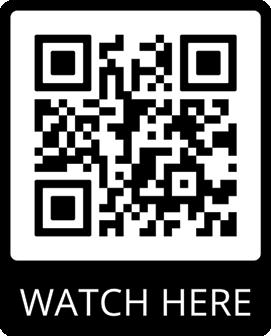





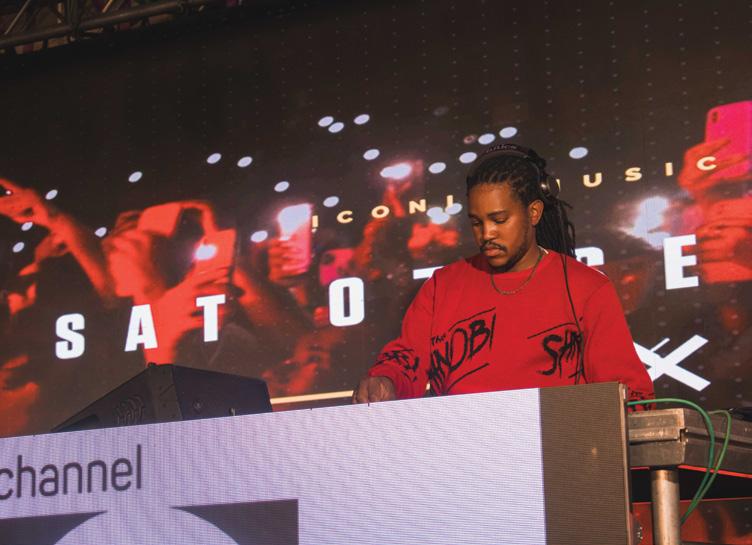
he Namibia Creative Summit, a groundbreaking event and the first of its kind in the country, is more than just a symposium; it is a bold declaration of the power and potential of Namibia’s creative industries. Having taken place on 6 September at the National Theatre of Namibia, the summit served as a meeting ground for artists, creators and visionaries who are pushing boundaries and redefining what it means to be a creative in Namibia today.
Not merely a gathering of talent, the event was a free-toattend initiative designed to break down barriers, inviting the public to engage without the worry of financial strain. The inclusive nature of the summit highlighted one key truth: creativity should be accessible to all, regardless of one’s socio-economic standing. By offering the event at no cost, the organisers demonstrated a commitment to ensuring that arts and culture are seen as vital, not just by the elite but by everyone.
The summit drew some of the country’s most esteemed figures. Among the honoured guests were Minister of Education Ester Anna Nghipondoka, and Vice President Netumbo Nandi-Ndaitwah. The vice president’s eloquent speech resonated deeply with the audience. She reminded us all that arts and culture are the soul of our nation, stating, “We must create an ecosystem where creativity is not only nurtured but recognised. A nation without a culture is not a nation.” These words echoed in the hearts of the audience, who know all too well the struggles of being a creative in a world that often underestimates the value of artistic expression.
For far too long, the creative sector in Namibia has been treated as secondary – something to be enjoyed, perhaps, but
not taken seriously. Many of us in the creative community have felt the weight of this dismissive attitude. Our work is seen as a hobby, not a career. The lack of standardised financial remuneration speaks volumes. How can we be expected to thrive when the value of our craft fluctuates so wildly? When one client is willing to pay a fair rate for a project, while another offers mere pennies, it leaves us questioning our worth.
And yet, despite this, the summit highlighted a growing realisation: creativity is not just entertainment; it is an economic driver. Around the world, the creative economy is booming, and Namibia is ripe with untapped potential. If properly nurtured, the arts can create jobs, build industries and contribute to the GDP. The “starving artist” trope, as old as it may be, does not have to be the reality here. The summit was a call to action to challenge this outdated narrative and to prove that creativity is a legitimate, viable career path.
But this change does not come without effort. We, as creatives, need to unite, raise our voices and demand the respect and recognition we deserve. As the vice president pointed out, we must build an ecosystem where our work is not just seen but valued. It is time for standards, for fair pay, and for a societal shift that acknowledges that art is not just a “nice-to-have” but an essential part of a thriving, dynamic culture.
So, here’s to the Namibia Creative Summit – the first of many. Let it be the spark that ignites change, not just in how others see us but in how we see ourselves. Because, as creatives, our work is not just a phase. It is our life, and it is time the world starts treating it as such.
Martha Asheeke









As the sun set on the final evening of our visit, our hearts were as warm as the play of colour on the horizon. Under the sprawling canvas of a fading African sky, where hues of crimson and lavender melt into twilight, makalani palms sway to a gentle breeze, accompanied by the silhouettes of a tower of giraffes as they slowly amble along – a puppet show of shadows against the evening glow. As night crept up on the savannah, our search for the elusive lioness, whom we had tracked with bated breath for the last hour, culminated in an unexpected rendezvous. While our eyes were still trained on the far-off treeline from where we expected her to emerge, she appeared, in the dimming light, not five metres from our Land Cruiser. Unbothered by our presence she glided past, her gaze fixed on a distant herd of impala, her evening's quarry. We left her to her twilight hunt, turning our own path toward Camp Kala, where luxury awaited under a starlit dome.
Our adventure had begun two sunsets prior at Onguma Tented Camp, a seamless blend of elegance and wilderness. An introductory game drive on the reserve yielded a completely unexpected delight. I am not sure if it was us or our guide who was most surprised when we spotted a leopard barely ten minutes into our journey. Hiding among the thick bush close to the road, the spotted feline surreptitiously peered at us through thorny branches before darting off towards thicker cover. It had been months since the guides could claim a leopard sighting on a reserve drive. That first night, under the vast sky at the edge of a large clearing, we dined al fresco while Etosha’s white pan glimmered in the distance. Over dinner, the reserve manager shared harrowing tales from the front lines of conservation, where protecting the reserve’s prized rhinos meant constant vigilance and confrontations with poachers – a testament to the fierce, and never-ending, battle between preservation and extinction.
The following morning we trekked through the bush on a guided nature walk, our senses tuned to the subtle wonders of the ecosystem all around. Our knowledgeable guide, Victor, teaches us about the delicate interplay of flora and fauna. The morning’s wild sojourn culminates in breakfast in the bush, accompanied by the cheerful clinking of mimosas – a perfect start to the day.
Our most unforgettable night during our escape into Onguma’s wilds was certainly aboard the Onguma Dreamcruiser. This marvel, a double-story Land Cruiser transformed into a luxurious suite, offered both comfort and an unparalleled connection with nature. Parked beside a private waterhole, our evening unfolded with a parade of wildlife, starting with a cheetah that briefly graced us with its presence. Soon a black rhino took centre stage, chasing the feline off to privately savour its evening drink as we watched in awe from our rooftop bed, hidden behind a mosquito net.
Throughout the night, the ballad of the bush played out in surround sound, stirring us from sleep with the thrill of proximity to mysterious creatures. Only a quick torch sweep revealed who our visitors were.
The following morning Victor collected us bright-eyed (from excitement, not rest) from our private sanctuary and our explorations extended beyond the confines of Onguma. A venture into neighbouring Etosha National Park brought us face-to-face with the park’s wildlife highlights – cheetahs darting through the grass, rhinos lumbering in the dust, elephants splashing in cool waters, and a leopard lounging beneath the thorny brush of an acacia.
It’s in the details
Our journey comes full circle upon our return to Camp Kala, a sanctuary of opulence where the Condé Nast Traveler's Hot List accolade of 2023 echoes in its every detail. Only four suites, each a bastion of privacy and comfort, offer a retreat where the wild meets the refined. Here, pampered by our private butler, we indulged in a six-course culinary feast prepared in front of us in the theatre-style display kitchen by new head chef Anthony. We spent our final visiting hours soaking in our deck bath, breathing in the evening air late into the night – the tranquil waterhole laid out before us like a mirror reflecting the stars above.
Onguma reminded me of the power of being surrounded by nature, every moment a dance of wild encounters. The experience is swathed in whispered luxuries, making it not just a destination, but a profound celebration of life's contrasts.
For more visit onguma.com
Elzanne McCulloch
First published in the Winter 2024 issue of Travel Namibia magazine. Subscribe to Travel Namibia here: www.travelnewsnamibia.zinioapps.com/shop





























In this episode, we take an overall look at NILALEG and explore this transformative project in Namibia. The initiative, led by Jonas Nghishidi and supported by the Global Environmental Facility and the UNDP, aims to integrate conservation, agriculture, and governance to enhance the livelihoods of over 20,000 Namibians. Emphasising integrated landscape management, NILALEG addresses global challenges such as biodiversity loss and climate change, aligning with the UN’s SDGs.



NILALEG (Namibia Integrated Landscape Approach for Enhancing Livelihoods and Environmental Governance) is a transformative five-year initiative aimed at improving environmental governance in Namibia's rural landscapes. Funded by the Global Environmental Facility and UNDP, NILALEG integrates agriculture and forestry management across five regions to enhance the livelihoods of over 20,000 people. By promoting sustainable development, biodiversity conservation, and climate change mitigation, the project addresses over ten UN Sustainable Development Goals. Central to its approach is integrated landscape management, fostering a balance between social, economic, and environmental needs. Local communities, particularly women and youth, are actively involved through multi-stakeholder coordination and grant mechanisms that support community-driven projects.

In the verdant expanses of the Nkulivere landscape in the Kavango West Region of Namibia, a transformative initiative, managed by the Namibian Nature Foundation under NILALEG, is taking root. The NILALEG project is at the forefront of pioneering development, aiming to uplift local communities through sustainable natural resource management by integrating environmental stewardship with economic growth. I recently had the opportunity to discuss this initiative with Werner Mbongo, the project coordinator for NILALEG’s Nkulivere landscape, as we sat on the banks of the Okavango River just outside Nkurenkuru.
Scan the QR code below to listen to the podcast series where Venture Media, in conversation with NILALEG team members, partners and coordinators, unpacks the various projects and successes of the initiative.
NILALEG, led by the Ministry of Environment, Forestry, and Tourism and the UNDP, hosted the Integrated Landscape Management (ILM) conference in Windhoek in June 2024. The event united experts to discuss sustainable land management, climate change, and poverty reduction. Key highlights included restoring degraded lands, using digital tools like drones, and fostering publicprivate partnerships for Namibia's environmental resilience and sustainable development.

WATCH: Devil’s Claw Harvesting

www.meft.gov.na/projects/nilaleg-project/
The NILALEG Project in Namibia's Kavango West region is empowering communities through the sustainable harvesting of Devil’s Claw, a plant with valuable anti-inflammatory properties. Led by the Namibia Nature Foundation, this initiative promotes ecological sustainability and economic empowerment by providing training and tools to local harvesters. The project improves livelihoods, with locals using the income for essential needs like education and food. Despite challenges, the project fosters resilience, setting a global benchmark for sustainable natural resource management.

ell them about this little girl with black eyes and crazy dreams. What I want is to write stories that you will hear about, that's all.” So goes the lyrics to Voilà, the song that landed Asham John in Paris and Belgium in July this year, after winning a French singing competition. Recording her submission video in her bedroom, little did Asham know that the words she was singing would come true.
After graduating from UNAM School of Medicine this year, Asham found herself evaluating the next chapter of her life. Would she continue on to internships and begin building her medical career, or was this the perfect time to actively pursue music? Rather serendipitously, the latter became the clear choice after Asham stumbled on the Chante En Français competition on social media, an initiative of the Ministry of Europe and Foreign Affairs France. She submitted her video and entry form and crossed her fingers. Out of over 300 submissions and 20 shortlisted, amateur singers, Asham is one of five winners whose prize included an all-expense paid trip to Paris during the Olympics, and Spa, Belgium for the Francofolies music festival.
Along with the other winners from Congo, Japan, Italy and France, this whirlwind, fiveday trip included staying at an artist residency in Villers-Cotterêts, the international city of the French language. It was here that Asham had a bit of an epiphany. In the company of multidisciplinary artists who make a living from creating, for the first time, Asham came to terms with the idea that a life in music and the arts could be in the cards for her, so she’s taking a gap year of sorts to explore this possibility.

Tell them about this little girl with black eyes and crazy dreams. What I want is to write stories that you will hear about, that's all."
Asham’s been singing her whole life, a journey that started with performing in church. Growing up, she was surrounded by music of all genres and introduced to the classics by her parents. A musical gene is undoubtedly coursing through her veins, as she recalls stumbling on an album her musically gifted dad created on cassette tape. Being raised by Nigerian parents, Asham stresses how fortunate she is that they have always supported her more unconventional ideals. Studying medicine felt like a calling, rather than a pressure. And now that Asham has graduated, she has the freedom to explore her creative side.
While she was born in Nigeria, the 26-year-old singer-songwriter has been living in Namibia for 20 years. Asham yearns to return to visit her distant family, but admittedly, feels that the land of the brave is her true homeland. While the area she is originally from faces unrest and uncertainty, Asham says she’s connecting with her Nigerian roots through food and music, until the right time comes for her to rediscover her early childhood stomping ground.
What is in store for Asham’s year of musical exploration? She says “I’m interested in the journey itself and not so much holding on to any specific outcome.” The songbird’s schedule is filling up with gigs, from corporate events to The Village Sunday Market. In the meantime, an EP is in the works, and sure to be filled with uplifting and hopeful original music as Asham experiments with soul, R&B and pop genres.
Asham John’s star is on the rise, and her story serves as a poignant inspiration to bet on yourself. From recording music in her room and sharing it to socials to winning a singing competition and performing at the Francofolies Festival, here’s that sign you might be looking for to step out of your comfort zone, the risk is almost always worth the reward. In her own words, Asham says “I’m exactly where I need to be,” and in the words of Barbara Pravi in Voilà, “Here I am.”
Charene Labuschagne





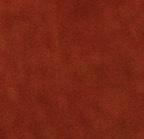













































































































































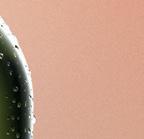





























































































Our stories are significant, and for many of us, childhood memories are a big part of those stories. The playgrounds where we laughed, the corner shops where we bought sweets, the trees we climbed and the streets we raced down – all these places leave a lasting imprint on who we become. Our physical environment shapes our experiences and daily routines, influencing the stories of our lives.
To have an impact on these stories, we must first understand who shapes our environment and how it is formed. Cities evolve quickly, with landscapes and spaces constantly transforming. By recognising these forces, and understanding how and why they function, we gain the power to hone our surroundings and, ultimately, the stories of our lives.
The physical layout of cities, including land use and infrastructure design, is a direct result of town or urban planning. These plans shape the visible aspects of the urban landscape and impact how communities live and interact. To take urban planning a step further, the urban design concepts are employed. Rather than just laying out towns and deciding what land use is required where, the urban design components refer to the art of relating structures of human settlements to one another and to their natural setting in order to serve the social, emotional and physical wellbeing of the urban population. Urban design aims to create harmonious spaces that balance the diverse needs of city life. It is about integrating functionality with beauty, ensuring that cities are not just places to live and work but vibrant, sustainable environments that enhance wellbeing, foster community and accommodate growth. I call this process of urban design “creating a living piece of art”, where every tiny detail is carefully chosen to shape our neighbourhood because each element matters. But who holds the brush? Who decides on the colours, strokes and vision that shape our collective canvas?
What is a city without community? A ghost town. What is a city without a thriving environment? A disconnected, lifeless landscape. To bring a city to life, its people must be proactive participants, working together to shape their environment. Community collaboration is the brush that colours our shared spaces, ensuring that every voice is heard and every need is met. Without this collective effort, a city loses its vibrancy and becomes just a place, rather than a living, breathing community.
As part of our Housing for All programme that establishes new urban areas for low-income residents, Development Workshop Namibia (DWN) and the Integrated Sustainable Development Foundation are working closely with Oniipa Town Council to apply urban design principles to the blossoming town, and to the two new neighbourhoods being developed. As part of this work, an urban design community workshop was held in the town. The workshop engaged a diverse group of residents, encompassing different genders, ages and professions. Participants immediately grasped the importance of being part of the urban design process and were excited as they reflected on their daily routines, needs and desired lifestyles, as well as how to incorporate this into town development. Their enthusiasm highlighted a deep connection with the process, as they envisioned how urban design could transform their community.
“I want a place that reflects our values as Owambo people, my needs as a woman and mother, and my children’s dreams,” one participant explained. This raises an important thought: How many of us have visions and art pieces that contribute to the canvas of our neighbourhoods?
Namibia boasts a vast diversity in culture, landscape and history. The urban identity of each town is distinct, shaped by its unique story, surroundings and people. As Namibian towns continue to grow, urban design can play a crucial role in solidifying this identity, weaving together the elements that make each town special and ensuring that its character is preserved and celebrated as it evolves. DWN is working with 19 local authorities across Namibia, supporting the provision of affordable land and housing. Using thoughtful planning and design alongside beneficiaries of DWN’s Housing for All programme, we aim to go beyond the basic provision of services to co-create urban spaces that blend convenience, culture, nature and fun.
As we move forward, it is essential to remember that we all have a role to play in shaping the spaces we call home. Whether you live in a bustling city or a quiet town, your environment is a canvas waiting for your contribution.

Verena Aindongo - Area CoordinatorDevelopment Workshop Namibia
For more information about the work carried out by Development Workshop Namibia, explore our website: www.dw-namibia.org
As the world’s travel enthusiasts begin to circle their destinations for the next big adventure, we’re reminded of the country’s vast and breathtaking expanse of space, where the stars shine bright, and the night sky is a canvas of endless possibilities.
Namibia offers a serene refuge for tourists looking for quiet, a vibrant cultural heritage, and a strong commitment to peace.
Time stands still in this enchanting land, where the rhythms of nature and the warmth of the African sun conspire to slow down the pace of life. Whether you’re trekking through the majestic dunes of Sossusvlei, exploring the ancient rock art of Twyfelfontein, or simply basking in the golden light of sunset, Namibia’s unique blend of space, peace, and time is sure to leave you feeling refreshed, rejuvenated, and ready to take on the world.

The Namibia Tourism Board (NTB) together with the Namibia tourism stakeholders plays a crucial role in the success of Namibia’s tourism industry by promoting and enhancing the country’s authentic experiences, cultural heritage, and natural beauty.
Imagine standing at the edge of the world’s oldest desert, where the sky stretches out in every direction, seemingly without end. The Namib Desert is a haven for astronomers, with some of the gloomiest skies on the planet. Watch the sunset over towering dunes, and then gaze up at the star-filled night sky, feeling the vastness of the universe unfold before you.
In an increasingly fast-paced and hectic world, Namibia offers a tranquil escape from the hustle and bustle. From the gentle rustle of the desert grasses to the soothing sounds of the Atlantic Ocean, every moment in this country is an opportunity to unwind and reconnect with nature. Take a leisurely drive through the rolling hills of the Khomas Hochland or stroll drive along the peaceful shores of Etosha Pan National Park and let your worries melt away.
Namibia’s rich history and diverse cultures are waiting to be discovered. Visit ancient rock art sites, where centuries-old paintings tell stories of long-forgotten civilizations. Explore the Namibian capital, Windhoek, with its German colonial architecture and vibrant markets. And step into the world of the San Bushmen or Ovahimba, who have lived in harmony with this land for thousands of years.
Getting There: Fly into Windhoek Hosea Kutako International Airport (WDH)
Language: English is widely spoken, but German and Afrikaans are also common.
Currency: Namibian Dollar (NAD), but credit cards are acceptable
Best Time to Visit: Namibia is an all-year destination but from May to October pick sessions for game, landscape viewing, and

many other activities November to March for mostly surfing and swimming
Accommodation: Ranging from luxury lodges to budget-friendly guesthouses and camping sites.
Safety: Safer than most African countries but familiarize yourself with the Namibia Tourism Board safety brochure at the website: www.visitnamibia.com.na
Namibia Tourism Board invites you to experience Namibia’s unique blend of space, peace, and time. To capture the essence of Namibia’s unique attractions the importance of slowing down and appreciating the country’s natural beauty. Namibia Tourism Board highlights the value of disconnecting from technology and reconnecting with oneself and nature.
So why wait?
Book your trip to Namibia today!
Prepared
by:
Flora Quest
Last month Linkin Park, one of the most iconic and successful bands of the 2000s, announced that they had got back together, were releasing a new album and had a new singer in the form of Dead Sara lead vocalist, Emily Armstrong. This led to hundreds of social media posts remembering former singer Chester Bennington, who took his own life seven years ago, including a previously unreleased video taken by his family showing how “happy” he was in the days before his death.
Watching these videos and reading the posts stirred up many strong feelings in me, and I thought that I would be writing this column about suicide and mental health (which would probably have been apt seeing as September was suicide prevention month). But then something else happened – the internet lit up with calls to “cancel” Linkin Park’s new singer and even the band itself!
This was not because of fans being unhappy that Chester Bennington had been replaced (though there were many of those too), but rather due to it coming to light that Armstrong was a member of the Church of Scientology and had reportedly at one stage provided support to convicted rapist Danny Masterson of That ’70s Show fame (who is also a Scientologist). That was when I decided I was going to write about socalled “cancel culture” instead.
Armstrong responded to the criticism, explaining that she had indeed briefly supported Masterson, who she at the time considered a friend, but very quickly realised that she should not have when the details of what he had done came to light. She did not say anything about being a member of the Church of Scientology or not. However, the First Amendment to the United States Constitution provides for both freedom of religion and association, and besides, it turns out that she was born into the Church, which is known to be very hard to get away from once you are a member.
thinking skills. After all, who still has time to actually think before posting? You might just miss out on the outrage!
Not everyone has the platform to defend themselves from allegations like Armstrong does, and, while there are some people who undoubtedly deserve to be cancelled, these kinds of “cancel culture pile-ons” can have real-life consequences. Being the recipient of one of these pile-ons could lead to mental distress, and in some cases has even led the recipients to commit suicide because they could see no other way of resolving the situation.
Being able to criticise someone is of course anyone’s right, and pointing out a mistake someone has made can provide a learning experience and lead to change. However, as psychologist and author of How to Build a Healthy Brain , Kimberley Wilson, points out: “Cancel culture often denies the cancelled individual the most basic of human opportunities: to apologise and to be absolved, because the road to redemption is blocked by the indignant mob.”
Being able to criticise someone is of course anyone’s right, and pointing out a mistake someone has made can provide a learning experience and lead to change.
There have been many well-known voices who have spoken out against cancel culture and especially the speed at which people join the pile-on, forgetting that they too have flaws. One of these was former US President Barack Obama, who said: “This idea of purity and you’re never compromised, and you’re always politically ‘woke’ and all that stuff. You should get over that quickly. The world is messy, there are ambiguities.”
I am in no way trying to defend Armstrong, but I am just using her example to try to highlight how easy it is for someone to be accused of something and for thousands of other people to jump on the bandwagon before taking the time to look deeper. This, of course, is not only a problem when it comes to people’s reputations; it is part of the overall damage that social media has done to our critical
Indeed there are, so the next time you see someone being called out on social media, take the time to think a bit and do your research. It might turn out that they did not even do what they are being accused of doing, or that the situation is more nuanced than it first appears – most things are. And besides, do you really want someone else telling you whose books you should be reading, which music you should be listening to, or what movies you should be watching? Or would you rather want to make up your own mind?
Until next month, enjoy your journey.
David Bishop






Namibia’s offshore oil and gas sector is set for a significant transformation, following a series of major discoveries in recent years which include Graff-1, Venus-1, Jonker-1X, La Rona-1 and Lesedi-1X. These developments have attracted global oil and gas giants such as TotalEnergies, Shell, Chevron and ExxonMobil, alongside energy corporations like Galp Energia and QatarEnergy.
ReconAfrica, in partnership with the National Petroleum Corporation of Namibia (NAMCOR), recently started drilling the Naingopo exploration well, with expectations of a successful outcome that could lead to a multi-well exploration campaign on PEL 73. In a similar move, Woodside Energy has secured an exclusive option to acquire a 56% stake in PEL 87, paving the way for the area’s first exploration well. Additionally, Rhino Resources has awarded Halliburton a contract for deepwater multi-well construction in Block 2914A, in partnership with Azule Energy. This collaboration is aimed at fast-tracking Namibia’s oil and gas growth, combining both local and international expertise. NAMCOR and Chevron have also entered an agreement that gives Chevron an 80% operating interest in PEL 82, with the national oil company and Custos Energy retaining carried interests. These partnerships signal a rapid expansion of the country’s energy landscape, positioning Namibia as a key player in the global oil and gas industry.
At the 2024 Namibia Oil and Gas Conference, the Ministry of Mines and Energy stressed the importance of responsible resource management and collaboration within the oil and gas sector. The event, organised by the Namibia Investment Promotion and Development Board (NIPDB), the Economic Association of Namibia (EAN) and the Hanns Seidel Foundation, was held under the theme “The Next Step Towards a Prosperous Oil and Gas Industry”. The ministry identified three key priorities for achieving prosperity such as the good governance of resources, international investment in local capacity, and strengthening NAMCOR’s role in managing petroleum resources.
Delivering the keynote address, Deputy Minister of Mines and Energy, Kornelia Shilunga, urged stakeholders to prioritise local value creation, transparency and sustainability, while calling on international companies to fully integrate Namibian talent and suppliers. She also emphasised NAMCOR’s responsibility to enhance governance and transparency in its operations, encouraging collaboration among government, industry and entrepreneurs to ensure shared prosperity in Namibia’s oil and gas future.
A strategic speaker at the conference and mayor of Lüderitz, Councillor Phillippus Albertus Balhao, shared his excitement and pride in the progress made by the Lüderitz Town Council. Despite being a small council with limited staff, the mayor said that while the town once faced significant challenges, the burgeoning oil and gas sector has brought new energy and hope to the community, leading to reinvestment, refurbishment and job creation. Balhao advocated for local content, calling for the Namibian youth to seize opportunities within the oil and gas industry. “Don’t stare yourself blind at just the star. Look at what you’re good at. Look at what you’re passionate about because it’s still a green field,” said Balhao.
Furthermore, the chairperson of the Economic Association of Namibia (EAN), Jason Kasuto, said for Namibia to become a leading energy hub on the African continent, economic growth must be inclusive to ensure sustainable development. “There’s no sustainable growth if it’s just economic growth. Economic growth needs to be inclusive,” he stated. Kasuto has called for a clear in-country value strategy to guide policy implementation and the establishment of a supplier database to facilitate market access for SMEs. “This database would bridge the gap for SMEs, allowing them to connect with international oil companies and meet local content obligations,” he explained. Kasuto said businesses that want to be part of this sector should position themselves early, as the market dynamics may shift in the coming years.
Maggie Forcelledo Paz



Embarking on a journey of a lifetime, Ray Sasman, a 52-year-old former teacher, became the first woman to traverse Namibia on foot from end to end. She began her epic 1,820-kilometre trek from the Noordoewer Border Post in the //Kharas Region on 3 May this year and reached the Katima Mulilo Border Post on 12 August. This extraordinary mission was undertaken entirely on foot to raise awareness and support for youth empowerment through her Walk With Me campaign. Each step brought her closer – not only to her destination but also to herself, the people of Namibia and her ultimate goal of advancing youth empowerment.



Back home safely after this remarkable journey, Ray reflects warmly on her experience.
“Walking allowed me to connect with people in profound ways – I made incredible connections with shepherds tending their goats, with those waiting for rides and with pretty much everyone I encountered. Slowing down allowed me to truly observe and immerse myself in the world around me.” Each morning began with the sun on her face and just a backpack of essentials on her back. Ray shares that she initially started her journey with a trolley to carry her supplies, but her experience of Namibia’s renowned hospitality soon changed her approach.
“It was truly a highlight for me to witness how Namibia opened its hearts and homes to me. I began with my trolley, but it wasn’t long before I realised that the warmth and generosity of Namibians made it possible to leave it behind. I could simply walk with my backpack, knowing I was supported along the way.” In her backpack, Ray carried just the essentials: four litres of water, energy-infused health snacks, freeze-dried food and a small sleeping bag. “You begin to realise how little we actually need,” she reflects.
Ray explains that this journey was as much for herself as it was for others. “I was walking for myself; this was my pilgrimage,” she says. But she was also driven by a desire to support the Narraville Youth Centre in Walvis Bay, a project spearheaded by the mayor. “This youth centre is designed to be a safe haven for children after school, where they can receive a hot meal and gain valuable skills. Plans include a computer centre, as well as education and sports areas to encourage an active lifestyle. It’s a place to keep the youth off the streets and provide them with opportunities for a better future.”
of her trek, especially schoolchildren who left a profound impact on her. She recalls a particularly moving gesture in Keetmanshoop by one of the region’s poorest schools, the Minna Sachs Primary School. “They started a coin collection for my cause, which was incredibly touching. I was so inspired that I decided to match their contribution and used the money to buy pencils for their students. It was important to me that this project was about paying it forward and creating ripples of goodwill. In Rehoboth, Dr Lemmer High School and Rehoboth Primary School also supported my journey with their own collection. Those children even walked a significant distance out of Rehoboth with me.”
Ray recalls, “Facing the elements every day was a challenge. On the third day, I encountered a severe sandstorm before Grünau and suffered a heat stroke. But through these trials, you realise just how resilient we can be. Witnessing the resilience of the Namibian people was truly inspirational. I hope to encourage the youth of Namibia to put down their phones and connect with our beautiful country, its wonderful people, and its stunning nature.”
I want to extend my heartfelt thanks to FlyNamibia for being a sponsor of Walk With Me. After such a long and exhausting trek, it was a tremendous relief to know I would be flying home quickly and safely.”
Ray’s motivation for embarking on this monumental trek was deeply personal. She reflects on the support she received from youth centres during her own upbringing. Growing up during apartheid, Ray found solace and inspiration in these centres. “In the 1970s in Khomasdal, an NG Kerk established a youth centre where we went every day after school. It had a library, and I believe I read every single book on its shelves. They also organised hiking activities, which sparked my love for the outdoors.” This experience left a lasting impression, driving her to give back and support similar initiatives for the next generation.
Ray undertook this incredible journey alone, yet she was never truly by herself. The spirit of Namibians shone brightly along her path, as strangers often joined her for stretches
Another memorable highlight of Ray’s journey was the support she received from FlyNamibia. “I want to extend my heartfelt thanks to FlyNamibia for being a sponsor of Walk With Me. After such a long and exhausting trek, it was a tremendous relief to know I would be flying home quickly and safely. Their gesture was a beautiful and much-appreciated conclusion to my journey,” says Ray, having received a complimentary flight from Katima Mulilo.
Now back home, Ray fondly reflects on the many joys she experienced during her journey. She recounts the heartfelt moments when people would pause their travels to chat with her, open their homes, or even invite her to pitch her tent next to their modest shacks, despite having little to offer. She also reminisces about the unique beauty of Namibia as seen on foot. “Travelling by car, you rush past so much,” she says. “But walking allowed me to truly notice everything. I remember one frosty morning, just 25 kilometres from Rehoboth, when I spotted icicles hanging from anthills. Experiencing the Namibian outdoors at such a slow pace was incredibly rewarding. Slowing down lets you appreciate the ever-changing landscape and the subtleties of its beauty.”
Following her epic journey, Ray raised N$66,900 which she handed over to the mayor of Walvis Bay in September. This contribution to the planned Narraville Youth Centre is intended to inspire others to connect with their community and find a safe, supportive space for growth.
Kirsty Watermeyer


As Namibia approaches the end of a decade marked by stagnant GDP growth, we invite you to reflect with us on the present economic climate, the factors that have brought us here, and where we might be headed. While we make no predictions, we aim to extrapolate some loosely held expectations about the future from past trends to gain insight into what the coming years might hold.
Namibia’s economy is expected to grow by approximately 3.1% in 2024, marking the fourth consecutive year of growth following the Covid-19 pandemic downturn. National Accounts data also indicates that 2023 was the first year in which the real economy meaningfully exceeded the size it reached in 2015. The eight-year period between 2016 and 2023 serves as a case study in the detrimental effects of procyclical monetary and fiscal policies in an economy heavily reliant on cyclical commodities. During the boom years of 2010 to 2015, fiscal policy became overly expansive, often resulting in investments in unproductive infrastructure. This was compounded by loose monetary policy and a favourable commodity cycle that attracted significant foreign direct investment. These factors converged to produce a period of rapid growth.
However, when global monetary policy tightened following low interest rates (induced by the global financial crisis) and the commodity cycle turned against Namibia in late 2014, it became clear that fiscal budgets had become unsustainable. To maintain these expansive budgets, large amounts of debt were required, without the ability to further increase overall spending. The end of expansive fiscal policy coincided with the downturn in the commodity cycle and modest interest rate hikes, effectively halting Namibian real GDP growth by mid-2015. Without the tools of fiscal or monetary policy to stimulate further growth, Namibia entered a prolonged period of stagnation, which deepened with the Covid-19 pandemic, pushing the country into a recession.
Since 2019, just three industries – mining and quarrying, electricity and water, as well as information and communication – have driven the bulk of Namibia’s economic recovery. These are the only industries to have outpaced pre2015 growth rates over the past four years. If we assess the positive contributions to real GDP during this period (taking into account negative contributions from other sectors), mining and quarrying alone have accounted for over 78% of Namibia’s total GDP growth between 2019 and the end of 2023. Meanwhile, industries such as manufacturing, construction, and financial services have yet to recover to their pre-pandemic levels in real terms. This underscores the uneven nature of the post-pandemic recovery, where headline growth figures conceal significant struggles in large sections of the economy.
We provide this historical context to offer insight into the current economic climate. While we lack recent labour force data, it is reasonable to assume that unemployment is higher now than it was in 2015. The average Namibian has not seen a meaningful improvement in quality of life, as reflected in real GDP per capita, which has also declined from 2015 levels. Rolling droughts over the past decade have placed immense pressure on the many Namibians who still rely on agriculture for their livelihoods. On the ground, economic conditions are far from fully recovered.
That said, the outlook is not entirely bleak. On the contrary, there is a great deal of excitement surrounding Namibia’s future. The country has recently garnered international attention, especially regarding its oil, gas and green hydrogen potential. These nascent industries are poised to capitalise on Namibia’s natural endowments. Recent oil discoveries by major players such as Shell and TotalEnergies have heightened interest in the Orange Basin’s potential for petroleum production. Further discoveries by Portugal’s Galp Energia have only added to the anticipation of things to come.
Green hydrogen production represents another headlinegrabbing possibility for future prosperity. Strongly supported by the government, this industry has garnered much interest due to the decarbonisation potential of the technology. As a manufacturing process, it promises to provide Namibia with much-needed employment opportunities and foreign direct investment. Although it remains difficult to conclude how soon the technology will be cost-competitive, Namibia is ideally positioned to harness its abundant solar and wind resources – among the best in the world – to test the potential of green hydrogen as part of the global energy transition. What is more certain is the need for an enabling policy environment in which the oil, gas and green hydrogen sectors can be allowed to establish themselves. Of particular importance is Namibia’s local content policy, through which the government aims to ensure that the economic benefits of oil and gas production are appropriately shared between the country and the investors developing these projects. As we approach the national elections later this year, it is critical that the right balance is struck in the policy environment.
As discussed earlier in this article, the urgency to capitalise on opportunities for economic progress is perhaps greater now than at any point since Namibia’s independence. While there has been significant progress in living standards since then, much remains to be improved. The next ten years could be the country’s best yet, but achieving this will require a substantial effort from Namibia’s policymakers to ensure that current opportunities are fully seized and not allowed to slip away.


























IJG believes in tailoring their services to a client’s personal and business needs. For more information, visit www.ijg.net

Eric van Zyl NETWORK

Paging through the latest property brochure would make any twenty-something professional wince at the amount of zeros and commas beneath thumbnail-sized pictures of the average homes on the market. These horrendous property prices exclude a large chunk of our population from becoming homeowners, even those of us who have repeatedly heard our elders say, “Property is the best investment.” In August, The Brief reported that Namibians require an average monthly income of N$36,000 for a N$1 million home loan. Yikes!
While owning a home feels out of reach for many people worldwide, the interior decor industry has caught up with renter-friendly solutions. Sure, you won’t be allowed to break down walls for that Pinterest open-plan kitchen, and you certainly can’t smash out the shoebox-sized shower, regardless of where you land with the landlord lottery. But when you find that apartment or townhouse rental that ticks your boxes, and imagine making it your home for a good few years, here are some renter-friendly home upgrades to invest in.
In Namibia, the options are still rather limited, unfortunately. If anyone in the procurement department of Namibia’s many home décor and lifestyle stores is reading this, I’m looking at you to add some peel-and-stick, renter-friendly wallpaper to the next order. PEP Home has a few affordable options in this department, but if you are unafraid of international online shopping and patient enough for your renter-friendly wallpaper to show up a couple of months down the line, I highly recommend having a look at what is on offer at Amazon or Etsy. As with all wallpaper, less is more. Pick one accent wall or even just the backsplash in the kitchen when adding this finish to your home.
I know you would much rather refurbish the entire kitchen as it currently resembles a time capsule from the 70s, but I’m sure you would also like your deposit back. Changing the handles on kitchen and bedroom cupboards might not seem so significant, but it can make a huge difference and level up the interior vibe of your home. It is an easy and high-impact switch, plus you can unscrew them and take the hardware along to the next place when the time comes. Just be sure to keep the original ones in a place where you’ll find them again, however tempting it may be to discard them altogether.


Intentionally adding colour to a blank space pulls its weight in bringing life to a home.
Paint, if you may
If you hit the jackpot with a lekker landlord, they might let you paint the place, often on the condition that you will paint it back to the original colour when you move. Intentionally adding colour to a blank space pulls its weight in bringing life to a home. Adding colour does not necessarily mean a bright blue or orange accent wall. Even subtle tonal changes can add warmth, as is the case with soft pastels and neutrals. If you choose to go with a more palatable, universally liked colour, you might even find that the landlord prefers it, and you won’t have to worry about returning the walls to their original state. Arguably the only downside to painting is that you cannot rip it off, pack it in a box and take it along to your next house. Unfortunately, even peel-andstick wallpaper is single-use.
Charene Labuschagne
Lighting makes all the difference
Almost every single rental has what the professionals call “boob” lights. You know the kind – unimpressive domes that do absolutely nothing for ambience, especially if they are housing cool white light bulbs. Changing up the lights in your rental, as with any home, instantly adds aesthetic value. Let’s face it though, lighting is expensive, so this is an investment to thoroughly think through and not jump on a passing trend. Consider your longer-term home decor ideals, and purchase accordingly. And when the time comes to change the lights and fiddle with wires, switch off the main power first and strongly consider hiring an electrician if you are out of your depth.





Connecting dreams to a decade of knowledge and experience
The leading aviation training organisation in Africa.

Meet Utaara Mootu, a young and dynamic member of Parliament who has defied the odds to become a voice for change. Not a morning person by any means, Utaara embraces her identity as a night owl, admitting that she hates mornings. Yet, her political career often demands early starts, sometimes as early as 3 AM, especially during campaigns when every minute counts.
Utaara’s journey into politics seems almost predestined. Coming from a family with deep roots in the liberation struggle, her passion for activism was ignited at a young age. Even as a child, she questioned the injustices she witnessed, and her curiosity led her to pursue a career where she could make a tangible difference.
As a young MP, Utaara faces unique challenges, particularly around age and gender. The older generation in politics often tries to undermine her, questioning her capabilities because of her youth. Being a woman adds another layer of difficulty, with societal expectations often clashing with her professional life. “There is a lot of intimidation, because they will definitely judge you based on your age. They will even tell you, ‘Sit down, we know more than you. We have fought for this country,’” she says. Despite these obstacles, Utaara remains resilient, using every opportunity to prove her critics wrong.
What keeps her motivated? It is the little victories, like seeing the positive impact of her work on society, whether it is a neighbour’s appreciation or a young person’s admiration. These moments remind her why she chose this path and give her the energy to keep pushing forward.
Her first day in Parliament was surreal; a dream fulfilled after years of hard work. From a young girl who once prophesied in church that she would one day enter Parliament to actually stepping into that role, Utaara’s journey is a testament to her determination.

Outside of politics, Utaara is a devoted mother who finds joy in spending time with her son and nephews. She unwinds by dancing, singing, writing poetry and immersing herself in rap music, with artists like Kendrick Lamar and Jay-Z serving as sources of inspiration. Her love for the arts is not just a hobby but also a passion she advocates for in Parliament, recognising the profound influence that sports and the arts can have on society.
Utaara’s message to young people is one of self-belief and resilience. No matter the challenges, she encourages them to wake up each day with the determination to fight for their dreams, just as she did. “Keep on fighting because it only starts with you. It starts with you fighting. I got up, I fought, and I continue to fight,” she says.
Her story is far from over, and she continues to be a beacon of hope for many, proving that with enough determination, anything is possible.
Proudly Sponsored by



Over the years, shooting stars have fascinated the imagination of people across the world. Also known as fallen stars, they are frequently viewed as symbols of hope, enchantment and good fortune by different cultures, yet for many, these blazing streaks of light are merely moments of astonishment. However, for a nine-year-old girl from Nqweba, South Africa’s Eastern Cape province, this curiosity became a physical reality. On a calm Sunday morning in late August 2024, Eli-zé du Toit was sitting on her grandparents’ veranda, when suddenly a rumble shook the ground and a mysterious rock plummeted from a fig tree right in front of her. On closer inspection, the rock, still warm on the surface, had a blackened crust with a grey inside that resembled concrete, but the interior was noticeably frigid. A meteorite.
But what exactly is a meteorite, and where does it come from?
A meteorite is a piece of extraterrestrial rock that survives after colliding into Earth’s atmosphere. They originate primarily from the asteroid belt, a region between Mars and Jupiter where remnants of the early solar system formation reside. The majority of meteorites come from asteroids, but some come from the Moon or Mars. These space pebbles are pulled to Earth by its gravitational attraction, which pulls objects from space. As meteoroids – the term used for meteorites before they enter the atmosphere – approach Earth, they encounter the atmosphere, where frictional heating causes them to glow and create a visible streak of light known as a meteor or “shooting star”. The meteoroid’s extreme heat and pressure frequently force it to break and disintegrate, with just
a portion of the debris reaching the ground as meteorites. Meteorite research offers important insights into the early solar system, planetary body formation and space conditions prior to meteorite entry into Earth’s atmosphere.
The Nqweba meteorite is not the first meteorite hitting Earth’s surface this year. On 21 January, the Ribbeck meteorite, an aubrite categorised as asteroid 2024 BX1, fell in Ribbeck, Germany. Aubrites are a rare type of achondrite meteorite, known for their unique mineralogical composition. This meteorite’s arrival has piqued the interest of academics, who want to investigate its composition and obtain insights into the differentiation processes of asteroids. The Ribbeck meteorite’s impact site, located in a rural area, provided a remarkably intact sample, which is crucial for comprehending the early solar system. This occurrence was followed by the Angers meteorite, which fell in France on 4 June this year. Although the meteorite’s exact classification is unknown, the lack of initial classification has not reduced its scientific value. Researchers are currently analysing the meteorite to determine its type and origin. The Angers meteorite’s fall was significant for its influence on the local population and the resulting surge in scientific activity. As for the Nqweba meteorite, which is of the HED type, thorough investigations into its composition and origin are still going on.
While the meteorites of 2024 are remarkable in their own way, history is full of extraordinary space rocks that have left indelible traces on our planet. One of the most well-known is the Hoba meteorite, the largest intact meteorite ever discovered on Earth. The Hoba meteorite was discovered in 1920 on a property called Hoba West, 19 kilometres west

of Grootfontein in northern Namibia. It weighs roughly 60 tonnes. It is thought to have entered Earth’s atmosphere less than 80,000 years ago and has never been moved since its discovery. The meteorite was first identified by farmer Jacobus Hermanus Brits, who, upon discovering the massive, unusual rock surrounded by white limestone, brought a sample to the South West Africa Company office in Grootfontein, where it was confirmed as a meteorite. The true scale of the Hoba meteorite was revealed only after digging around the rock. The meteorite has a huge, generally rectangular shape with a flat top and is about 2.7 metres (9 feet) wide. Its composition is mostly iron (82.3%), with nickel (16.4%) and cobalt (0.8%). The shallow angle of its atmospheric entry and low impact speed produced a small crater, which has since eroded away.
The Gibeon meteorites, which fell over a broad elliptical area of around 275 by 100 kilometres centred on Brukkaros in Namibia, are well-known for their widespread dispersion and scientific significance. These meteorites were initially discovered in the early nineteenth century, when James Alexander collected little metal bits in 1838, which were later confirmed as meteoritic by chemist John Herschel. The Gibeon meteorites are classed as octahedrites, which are predominantly made up of taenite and kamacite, two crystalline forms of an iron-
Their research not only improves our understanding of the materials and processes that contributed to the formation of planets and celestial bodies, but it also gives a direct link to the early cosmos.
nickel alloy. Their unique Widmannstätten structure, which features alternating bands of these two minerals, provides intricate data about their genesis and temperature history. The meteorites show distinct thermal alterations from their high-speed atmospheric entry, including smooth outer layers and deep, spherical cavities, indicating an extended atmospheric flight. Their composition, which includes an average of 8% nickel and traces of other elements such as cobalt and phosphorus, makes them crucial for studying the processes that shaped their parent body and their subsequent journey through space.
Meteorites act as cosmic time capsules, retaining crucial information about the solar system’s formation and history. Their research not only improves our understanding of the materials and processes that contributed to the formation of planets and celestial bodies, but it also gives a direct link to the early cosmos. Scientists can solve the riddles of planetary formation and determine the possibility of extraterrestrial life by analysing these spaceborne debris. Meteorites continue to enrich our understanding of the universe, providing a profound connection between Earth and the furthest reaches of space.
Victoria Ndayambekwa Nakafingo


The upcoming exhibition Echoes of Resistance: The Power of My Voice presents a compelling intersection of art and activism through the powerful work of Ina-Maria Shikongo. A climate justice advocate, artist and educator, Shikongo’s life and work are testament to the profound potential of creativity to inspire social and environmental change. Born as a refugee in Angola and now a proud Namibian, her journey from displacement to empowerment has deeply influenced her artistic narrative. This exhibition delves into themes of environmental justice, the socio-economic impacts of climate change and the urgency for systemic reform.
Shikongo’s work is not just a visual experience but a call to action. Her art goes beyond aesthetics, serving as a medium for storytelling and a platform for marginalised voices. From textile banners to mixed-media installations, her creations reflect her lived experiences, struggles, and hopes for a more equitable future. As Shikongo articulates in her artist statement, “My art is not separate from my activism – it is a manifestation of it, a call to action, a catalyst for transformation.” Each piece in this exhibition embodies a powerful message, inviting viewers to confront uncomfortable truths and encouraging them to be agents of change.
The exhibition’s thematic approach is anchored in protest and solution banners, a visual dialogue between resistance and resolution. For Shikongo, these banners are more than mere objects; they are extensions of her activism. However, the banners are not solely in protest and about resistance. They also highlight community-driven solutions. In this way, the exhibition offers a balanced narrative of both dissent and hope.
Shikongo’s journey as an artist and activist has been marked by her involvement in global and grassroots movements. From participating in international events like COP26 and COP29 to contributing to The Climate Book by Greta Thunberg, her work has consistently focused on amplifying the voices of those marginalised in the global climate conversation. She began creating protest banners in 2021, using recycled textiles
and materials as a statement on sustainability. Through these creations, she transforms what others discard into powerful expressions of resistance and hope.
Echoes of Resistance: The Power of My Voice also challenges prevailing notions of development and resource exploitation. Shikongo urges viewers to reflect on the socio-economic implications of Namibia’s recent oil discovery. She raises critical questions about who really benefits from these resources. “Why do we measure development and success using ideologies that don’t reflect the realities of many African communities? Yes, Namibia found oil, but will a car guard in Windhoek or a nurse in Gibeon or Tsandi see any of that wealth?” she asks.
By referencing historical and contemporary case studies from countries like Nigeria, Angola, Mozambique and Libya, the exhibition provides a sobering reminder of the potential pitfalls of resource extraction without equitable governance. Shikongo’s work urges Namibia and other nations to learn from these examples and prioritise sustainable and inclusive development.
Shikongo’s latest collection of work invites viewers not just to observe but to engage, reflect and act. It challenges us to reconsider our understanding of art and activism, to see them not as separate entities but as interconnected forces for positive change. In a time of global crises, Shikongo’s work is a beacon of resistance and a reminder that creativity can be a powerful tool for justice and transformation. This exhibition is not just about viewing art; it is about engaging with the narratives behind it and being inspired to make a difference.
Echoes of Resistance: The Power of My Voice opens at The Project Room on Friday, 18 October 2024 and will be on show until Saturday, 9 November 2024.
The Project Room

The Project Room - Namibia www.theprojectroom.com.na








Medical Rescue Africa (MRA) is Namibia’s leading fixed wing Aeromedical Evacuation company specialising in the evacuation of critically ill and injured patients across Africa, 24 hours a day, 7 days a week.
MRA, through Westair Aviation, has a dedicated fleet of Air Ambulance aircraft on standby which have the ability to land on unimproved airstrips as well as to operate at night and in bad weather conditions. Air crews undergo regular refresher training, and all operations comply with the highest safety and quality standards.
MRA has its own 24-hour Call Centre with trained and dedicated operators utilising state of the art equipment and aviation information technology. The Call Centre liaises with local and international Medical Aid, insurance and medical assistance companies to help facilitate and coordinate medical evacuations, and medical repatriation services.
To ensure the best possible pre-hospital treatment to patients, MRA offers a 24-hour Road Ambulance at Eros Airport for transporting patients from the Airport to the treating Hospital. The MRA Ambulance is equipped to an ICU patient care level. MRA has a standard service-level agreement with all accredited ALS Ambulance Services across Namibia for effective Road Ambulance evacuation services should the requirement be to not activate the fixed wing Air Ambulance.
MRA is led by a management team with extensive experience in medical response, evacuation and support operations.
Tel: 912 within Namibia or +264 83 339 0033




Community hostels in the //Kharas Region serve schools in economically challenged areas. The local economy, primarily reliant on small-scale livestock farming, has been hit hard by ongoing droughts, leaving many families struggling to provide for their children. Debmarine Namibia has donated 129 mattresses to two community hostels in the //Kharas Region, significantly enhancing the living conditions for students there.
The two beneficiary hostels, JA Kahuika and //Khūta!hoas, are located in the Berseba Constituency. The principal of // Khūta!hoas Primary School expressed his excitement, noting that their school is the most remote in the region, located 75 km from Berseba along a particularly challenging road. He described the donation as a true blessing for the learners in the hostel, emphasising that while the community has worked hard to support the students, this sponsorship has significantly alleviated their burden.
Upon receiving the donation, Aletha Frederick, the governor of //Kharas, expressed her heartfelt gratitude, stating, “We are grateful and appreciate this sponsorship, which will undoubtedly make a difference in the students’ performance.” The governor also called upon the community to take responsibility for the donated items, ensuring they benefit the students for years to come and allowing other communities to share in this support.
In addition to the mattresses, the donation includes fitted sheets, cutlery, crockery and food items, valued at over N$160,000. Stella Ipinge, the chairperson of the Debmarine Namibia Social Investment Committee, officially presented the donation to the two hostels.
Last year, Debmarine Namibia made a significant contribution by sponsoring computers and training equipment at the Women’s Action for Development Centre in Keetmanshoop, demonstrating their commitment to uplifting various regions.
These donations exemplify the hope that can be nurtured in communities facing hardships, providing individuals with opportunities to thrive despite challenging circumstances.



Vice President Netumbo Nandi-Ndaitwah said that 15,000 micro, small and medium enterprises (MSMEs) are registered in the country, contributing approximately 12% to the gross domestic product (GDP).
She highlighted that in 2021, African startups attracted N$9.2 billion (US$5.2 billion) in venture capital, and the continent now boasted five unicorn companies—firms valued at over N$18 billion (US$1 billion).
Nandi-Ndaitwah further explained that it was necessary to establish frameworks to formalise the sector without overregulating it.
“Our young entrepreneurs possess the energy, creativity and drive to not only catch up but to position Africa as a global leader in innovation and growth. As we work towards the emergence of thousands of African unicorns, now is the time for all entrepreneurs to aspire to grow beyond the startup and MSME phases,” she said.
The Ministry of Urban and Rural Development says its Food and Cash for Work (FCFW) programme, implemented under the National Rural Development Policy (NRDP), has created over 600 temporary jobs in rural Namibia.
The programme provides food and occasional cash payments to unemployed adults who work on local development projects. These projects include poultry and livestock farming, vegetable growing, classroom and bridge construction, earth dams and debuting.
The minister, Erastus Uutoni, acknowledged the support from development partners and the private sector.
“We must avoid working in silos and should pull in the same direction where we plan and execute our activities in an integrated manner. Resources are hard to come by nowadays, and we must prioritise and optimally use the limited resources at our disposal and do more with less. For what is entrusted to us, there must be full and collective accountability,” Uutoni said.

Effective from 30 September 2024, debit order payments to and from South Africa will no longer be permitted under Namibia’s new electronic fund transfer (EFT) regulations, according to the Bank of Namibia (BoN).
These regulations, outlined in the Determination on the Conduct of EFT Transactions (PSD-9) and the Directive on the Speed and User Fees and Charges of Common Monetary Area (CMA) Transactions (PSDIR-9), mark a significant shift in how domestic and cross-border transactions are processed.
BoN’s director for strategic communication and international relations, Kazembire Zemburuka, said the central bank’s new directive, PSDIR-9, aims to enhance the security and efficiency of cross-border payments.
He also explained that cross-border transactions between Namibia and other CMA countries, particularly South Africa, will be treated as international transactions and processed through the SWIFT network.
“Key changes include the treatment of cross-border EFT transactions within the CMA, which will now be conducted through the SWIFT network,” he said.

The Namibia Investment Promotion and Development Board (NIPDB) says the country is spearheading investment projects valued at over N$170 billion.
NIPDB’s chairperson and chief executive officer, Nangula Nelulu Uaandja, highlighted the importance of efficient public sector processes and collaboration to accelerate the realisation of the investments and create jobs for Namibians.
“In just three years, Namibia has attracted a total of approximately N$73 billion in foreign direct investment, N$33 billion of which came from the oil and gas industries. The remaining N$40 billion stems from various sectors, including mining, agriculture and industrialisation, reflecting the changes we are seeing in Namibia’s investment climate,” said Uaandja.
She also said that the collaboration between NIPDB, the government and other stakeholders continues to send a positive message globally that Namibia is an attractive destination for investment.
According to the Deputy Executive Director in the Ministry of Industrialisation and Trade, Michael Humavindu, the Ministry is working to create a more accessible and supportive environment for MSMEs within the public procurement system.“ The public procurement rules need to be streamlined and simplified to allow MSMEs easier access. This includes reviewing tender fees and related costs to ensure they do not create unnecessary burdens for smaller businesses, giving them a fair chance to participate,” he said at a Standard Bank Namibia networking event.
Humavindu emphasised that preserving local participation in public procurement would boost the competitiveness of domestic businesses and stimulate economic growth. “One of our key priorities is reducing the interest rates on loans available to MSMEs. This was mandated by the Cabinet directive in February 2024, and by next year, we plan to report back with solutions. We want to present these solutions to the Treasury for inclusion in the next financial budget cycle,” Humavindu explained.
Humavindu also highlighted the need for collaboration with commercial banks to finance MSMEs, emphasising that expanding finance options beyond the Development Bank of Namibia (DBN) is critical. “We are working to expand MSME financing beyond DBN. The involvement of commercial banks is crucial in this regard, allowing for a broader financing scope. This is a collective effort, and we need commercial banks to collaborate with us to bring contract financing solutions beyond DBN,” Humavindu added.
Humavindu further highlighted the importance of addressing conditions attached to donor funding, which sometimes conflict with Namibia’s strategic objectives. He reiterated the need to review these conditions to ensure that public procurement opportunities are aligned with national development goals, particularly in reserving tenders for Namibians.
“A lot of work lies ahead, but we are committed to collaborating with all stakeholders to ensure the success of these initiatives. Together, we can create an environment where MSMEs can thrive and meaningfully contribute to the economy,” Humavindu said.


Tourism and hospitality builds the economy, by creating jobs, earning foreign currency, and supporting other sectors, such as transport and logistics. The Development Bank of Namibia understands that tourism is a roadmap to the future, which is why we give more flexibility and support to the sector, and more thought to the ideas, visions and plans of our applicants.
If you have a business plan for tourism and hospitality, call 061 - 290 8000, and expect more.

www.dbn.com.na


“In order to escape madness, I will live madly. I will risk my life in order to save it.” Renowned climber and National Geographic photographer Richards recounts his escape from a tumultuous childhood through climbing and photography. With stunning photos and candid prose, the book chronicles his incredible adventures—from summiting some of the world’s highest peaks to surviving a catastrophic avalanche—but it’s also a poignant exploration of his battle with bipolar disorder, addiction, and the lingering effects of early trauma. With candor, Richards shares his journey of confronting his darkest demons and the relentless pursuit of inner peace.
Goodreads score: 4.21/5

Hosted by Joshua Rubin, this podcast looks behind the veil of South African society, uncovering the stories of gangsters, politicians, celebrities and murderers. Rubin is a talented photographer and videographer who has honed his skills of capturing the country, and channeled that into creating a listening experience challenges our preconceived ideas and biases. Through conversations with the likes of track athlete Wayde van Niekerk, political cartoonist Jonathan Shapiro and Pollsmoor prison warden Kieron Reddy, Rubin seeks to strip away prejudice, tell unfiltered stories, and reveal what we all have in common: we are human.
Spotify rating: 4.9/5

This gripping drama series dives deep into the turbulent world of John Dutton, a sixth-generation rancher played by Kevin Costner. As the head of the largest contiguous ranch in the United States, Dutton navigates a ruthless landscape filled with political corruption, land-hungry developers, and the constant threat of violence. The series masterfully blends family loyalty with power struggles, as Dutton fights to protect his land from the encroaching town, an Indian reservation, and America's first national park. With its intense storytelling, complex characters, and breathtaking scenery, Yellowstone is a must-watch for fans of epic family sagas and high-stakes drama.
Tomatometer: 84%

Our monthly round-up of good books, podcasts, movies and series.
This captivating and humorous debut novel follows the unconventional journey of Elizabeth Zott, a brilliant chemist in the 1960s. Despite her groundbreaking work, Elizabeth faces sexism at every turn—until she unexpectedly becomes the star of a wildly popular cooking show, Supper at Six. With her scientific approach to cooking, Elizabeth not only entertains but inspires women to defy the status quo. Alongside a dazzling cast of supporting characters, this novel explores themes of equality, resilience, and the power of one woman’s determination to change the world around her. It's a witty, heartwarming, and empowering read that will leave you cheering for its extraordinary protagonist.
Goodreads score: 4.29/5

This music experience curators and record label’s channel is for the cinematography and electronic music kids. The Cercle YouTube channel started out showcasing hour-long DJ and live music sets in clubs or home settings, and has slowly progressed to unparalleled visual and audio experiences. The most magnificent architectural or natural sites, like Petra and Lençóis Maranhenses National Park become the backdrop as some of the worlds best DJs and unique musicians play. Some videos include crowds of happy dancing people, and others just show the artists solo, with just their instrumments. It’s the kind of YouTube channel that you can play for hours on end, either as background music to your house party or a sitdown audiovisual experience.
Subscribers: 3.2 million

Thelma
Inspired by director Josh Margolin's own grandmother, Thelma reimagines the classic action hero through the lens of a granny. The movie cleverly uses action movie tropes to highlight the resilience and agency of aging. With an infectious sense of humor, Thelma stars the legendary June Squibb in her first leading role, bringing grit and determination to the titular character who proves she's more than capable of handling whatever comes her way. Supported by a talented cast including Parker Posey and Clark Gregg, Thelma is a heartwarming and hilarious tribute to the strength of seniors and a fresh twist on the action genre.
Tomatometer: 99%

In August 2024, Namibia’s annual inflation rate decelerated to 4.4% y/y, down from 4.6% in July 2024 and 4.7% in August 2023, reaching its lowest level since November 2021. The key contributors to inflation were food and non-alcoholic beverages, housing and utilities, and transport. On a month-to-month basis, inflation rose by 0.3%, compared to 0.2% in July. Core inflation, which excludes the most volatile items, edged lower to 3.8% y/y from 3.9% in the previous month.
Goods inflation remained the primary driver of overall inflation, standing at 5.1% y/y, though this represents a slowdown compared to July and August 2023. Services inflation remained stable at 3.4% y/y (Figure 1).

FAO FOOD PRICE INDEX - AUGUST 1990 TO AUGUST 2024

Source: NSA/SS
Source: FAO/SS
The food and non-alcoholic beverages category recorded an inflation rate of 5.2% y/y, marking its second consecutive monthly increase, although it remains significantly below the 10.0% y/y observed in 2023. Price increases in bread, cereals, and oils contributed to this rise, while fish prices decelerated sharply to 0.1% y/y, down from 16.2% y/y in August 2023, driven by lower costs for dried and fresh fish products.
Globally, the FAO Food Price Index stood at 120.7 points in August 2024, slightly below July's level and 1.1% lower than a year ago. Declines in the prices of sugar, meat, and cereals outweighed increases in vegetable oils and dairy products (Figure 2).
In the housing and utilities category, which holds the largest weight in the inflation basket, inflation rose to 4.1% y/y in August 2024, up from 2.8% in the same period last year. This increase was primarily driven by rent payments, which saw an inflation rate of 4.2% y/y (Figure 3).
Inflation dynamics varied across Namibia's regions. Zone 2, which includes the Khomas region, experienced the highest inflation at 9.3% y/y, largely driven by transport costs. Zone 1 maintained

steady inflation at 1.5% y/y, while Zone 3 continued to face deflationary pressures in rental prices, which have persisted since early 2024 (Figure 4).
Global oil prices have declined significantly, with Brent crude dropping below $70 per barrel as of September 2024, the lowest level since late 2021. This decline, driven by reduced global demand—particularly from China—has led to fuel price cuts in Namibia. These cuts are expected to provide muchneeded relief to transport-related inflation, which has been a key pressure point in recent months (Figure 6).
Our outlook for inflation in Namibia anticipates further easing, largely due to these fuel price reductions and the anticipated oil market surplus forecasted by OPEC+ for 2025. However, rising food prices remain a concern, posing a risk of offsetting some of the deflationary benefits from lower fuel prices.
SS Thoughts
Given these developments, our initial forecast of 4.9% average inflation for 2024 may be revised downward, likely toward 4.6%–4.7%. The extent of this revision will depend on the continued trajectory of fuel prices and the persistence of upward pressure on food costs.
FIGURE 3: RENTAL PAYMENTS FOR DWELLING ANNUAL INFLATION –FEBRUARY 2014 TO AUGUST 2024
FIGURE 4: ZONAL RENTAL PAYMENTS ANNUAL INFLATION – MAY 2018 TO AUGUST 2024



Simonis Storm is known for financial products and services that match individual client needs with specific financial goals. For more information, visit: www.sss.com.na





“When it comes to our children, it is never too early to teach them about how to avoid unsafe situations.” – Jana Vermeulen
Jake would never do that... She is just being polite… That is normal for families…
We have all had those experiences where we felt just ever so slightly uncomfortable: a family friend or relative holding on for too long, that person coming too close for comfort or someone asking questions you actually would prefer not to answer. The often overused, but under-executed word “boundary” is familiar to all of us. The problem with boundaries is often our interpretation of the word. It is regularly assumed that when you state or impose a particular boundary, it requires the other party to do something, when, in fact, it requires the other party to do nothing.
A boundary, by definition, is “a line which marks the limits of an area; a dividing line”. It assumes what you are not willing to accept or do.
When it comes to our children, it is never too early to teach them about how to avoid unsafe situations, which may in certain instances not be explicitly precarious, yet require a boundary to be defined.
You want your child to be safe but not anxious. Aware of their surroundings but not constantly living in fear. Confident that they can go out and face the world but not be reckless. It is a fine line that parents and caregivers walk. But how? How do you teach your children about danger without traumatising or confusing them?
putting them in an uncomfortable situation is familiar and they assume that this is the norm or that they are misinterpreting this.
You can’t stop trouble from coming, but you don’t have to give it a chair to sit on.
One of the best gifts to give your child, especially when they are between the ages of 12 and 18, is to have an adult “go-to person” who they feel connected to and who is close to one or both parents. It can often be intimidating communicating these occasions of discomfort with parents, often purely because of the transitions of becoming older, not because anything in particular is wrong in the parent-child relationship. This adult can then act as the catalyst in helping share and disarm a potential bomb in a less destructive manner. The alternative is to have an arrangement where the child has a journal or book in which messages can be shared, and the book is placed on the pillow or nightstand of the parent. The intention is to help share tricky information when it is too painful to share verbally, and to treat it with the utmost confidentiality and trust. The parent should be careful not to react immediately, as often children prefer that you are aware first, discuss the options and only then react based on what was mutually considered. This creates a platform to share tricky information in general.
“You can’t stop trouble from coming, but you don’t have to give it a chair to sit on.” – African proverb
You do it by starting early and engaging regularly. You start by pointing out what the accepted norms within your home are. This includes who and for how long you have to hug or kiss, even if they are relatives or family friends. You teach them explicitly what the options are when they feel uncomfortable or when they are potentially being put at risk when it comes to seemingly insignificant actions such as going to the bathroom, changing into a different outfit or having a sleepover.
Children should be taught to walk away and notify someone when they feel scared, uncertain or even in the slightest confused. This includes teaching them the more obvious actions like screaming or yelling but also involves immediately telling a trusted or at least another adult about this feeling that is unusual or unsettling. Often, children second-guess themselves if the person who is
Your job as a parent is to make sure you are the type of host where your children want to spend time at your table and keep returning because of the safety and security they experience around that table and on those chairs.
Jana
Vermeulen Educational Psychologist


The power to make cross-border payments lies at your fingertips. By simply using the FNB App or FNB Online Banking, you can easily transact with South Africa, Lesotho and Eswatini (CMA countries) as well as the rest of the world.
Make a global payment on the FNB App
1. From the Menu, select ‘Forex’ then select ‘Global Payments’
2. Select ‘Beneficiary list’
3. Select ‘Pay’ next to the beneficiary
4. Select the account that payment will be made from and enter payment details
5. Select BoP code (reason for payment)
6. Accept the terms and conditions
7. Confirm that the details are correct
8. Accept quote
9. Select ‘Finish’
Make a global payment with FNB Online Banking
1. Select ‘Forex’
2. Select ‘Pay’ next to the beneficiary
3. Select the account that payment will be made from and enter payment details
4. Select BoP code (reason for payment)
5. Accept the terms and conditions and click ‘Confirm’
6. Accept quote
7. Select ‘Finish’

Please note that all transactions to CMA countries must be initiated as a forex transaction and not EFT.
Unique local lifestyle brands we're loving, and why you should too
We love their summer-ready cotton towels. As we gear-up for warmer weather, the L E D range of 100% cotton and Turkish cotton towels are making the case for a lightweight and quick drying switch. These lightweight and easy to pack towels are your perfect poolside, beach-bound and picnic companion, especially as the holiday season draws closer. The range includes hand and tea towels, and function both practically and as home decor. Ethically made of natural fibres, the L E D handwoven towel selection gets softer and more absorbent with every wash, plus uses a third less energy to wash and dry than the standard terry towel. Sounds like a no-brainer for a stylish and sustainable summer!
Shop online at www.leonengelbrecht.com
@leonengelbrechtdesign
+264 81 251 2169
30 Lazarett Street, Southern Industrial, Windhoek





We love their cosy, cool and elegant ethos. For fourteen years, founder Charl Botes has carefully curated the home decor pieces in Habitat, a space that has become synonymous with Swakopmund’s special shopping scene. It was only a matter of time then, for their selection of bathroom and bedroom accessories, enchanting home fragrances, soft furnishings, captivating lighting, and rugs to find a home in Windhoek. A beacon of inspiration and possibilities for architects, designers and homeowners alike; whether in the capital or at the coast, a browse through Habitat entices everybody to bring joie de vivre to their homes and businesses.
Habitat Swakopmund
+264 406 466
Habitat Lifestyle Centre, New Industrial, Einstein Street.
Habitat Windhoek
+264 81 493 3733
Bougain Villas Complex, Sam Nujoma Drive
Are you a Nam or SA based lifestyle brand? List your label with us for only N$1,000 per month for 6 months | fly@venture.com.na


Fortune Kangueehi, a celebrated private chef, MasterChef South Africa finalist, and award-winning Namibian culinary expert, has been making waves in the culinary world with her innovative approach to cooking and community empowerment.
Known for her impressive skills and engaging presence, Fortune has recently embarked on a transformative mission that blends her passion for cooking with a deep commitment to social impact.
From passion to profession
A foodie at heart, Fortune spent many years working in the fields of marketing and advertising. However, cooking always seemed to come naturally to her. After reaching the top 18 of MasterChef South Africa, she returned to her corporate job but soon she was unhappy, stressed, burnt out and ready for a change. As she puts it, her passion came looking for her. “I’ve always known I wanted to cook, and I knew that I wanted to do something with my cooking that can make a difference; something that could empower people. When I started this journey, I had a concept – training domestic workers to cook. I always thought the idea of coming home to a delicious meal that their domestic worker had prepared for them would be appealing to corporate men and women.”
The idea took off, and soon she was earning her way by teaching others to cook. Fortune explains that her process is tailor-made, where she sits with her clients to understand their exact needs. A warm memory comes to mind: “I was once doing a consultation with a new client and his domestic worker kept making sarcastic sounds as we spoke. Afterwards, I asked her what that was about and she told me that it was because she was told years ago that she was unteachable and so I would not be able to teach her anything. She told me that she had never been to high school because of this belief.” Fortune goes on to share how she cried when after her time with this woman she received
a voice note from her, saying that Fortune had brought light into her life. She shared that Fortune had made her believe that she too could learn something. “Now she’s making dishes that she cannot pronounce, but she’s making them. It is the most rewarding thing I’ve experienced all my life.”
“It was here, teaching domestic workers that I realised that this is where my passion lies. I love teaching my skills to others.” Fortune explains that she has added many other areas of teaching to her repertoire since she first launched Cooking with Fortune. She now does group lessons for adults and for children.
Another interesting area of focus is meals for tourists. As she explains, “This is about giving people a real Namibian food experience. I am a foodie – when I travel, I want to experience another country’s food. It’s the easiest way to get to know a culture. The way I do it is a complete Namibian experience. I take them with me to the markets at single quarters, we buy fresh ingredients together and then we cook together, and I tell them about the food and about Namibia.
Even more fascinating is the work Fortune is doing at orphanages and early childhood development (ECD) centres. “It was actually at one of my kiddie lessons when an ex-colleague, who runs the Hope Village orphanage, asked for my help. The children at Hope Village didn’t know how to cook, they haven’t been in kitchens watching their mothers cook, and that is how most of us learn. So I started training three girls, and you won’t believe the difference it made. I then trained the caregivers, and it made me realise that there’s a real need in orphanages and ECD centres.”
Fortune explains that she would start her process by first visiting the pantries at the orphanages or ECD centres. “At Hope Village, they used to serve the children pasta with tomato sauce on it. This is not about access to food; it is about














not understanding the nutritional side. When you’re trying to stretch the dollar, you end up buying things like tomato sauce. I went in and said we should rather get lentils or peas or things that last longer but also have nutritional value. I have taught them how to make bone broth (which is full of nutrients) from the bones they would normally throw away, or vegetable stock from vegetable scraps. Also the aspect of wastage. You often have people bring their oversupply to orphanages.” Fortune describes how if there is an abundance of pumpkins for example, farmers might drop off their excess at an orphanage or ECD centre, but without the knowledge of how to preserve food, it would often go to waste. “I show them how to preserve it, puree it or dry it so that it keeps longer.”
This is about giving people a real Namibian food experience. I am a foodie – when I travel, I want to experience another country’s food. It’s the easiest way to get to know a culture.
After realising the need in this regard, Fortune approached the nutrition team of the Deutsche Gesellschaft für Internationale Zusammenarbeit (GIZ) Farming for Resilience Project. “They encourage backyard gardening and together we did a workshop to teach people how to prepare the food they grow. In this one session we did together, I had ten caregivers from different ECD centres, and I explained which macronutrients and micronutrients the body needs, what the different vitamins are and in which foods they can be found. I also explained that if you boil something for hours and throw the water out, there goes all of the goodness of the food. It was incredible and I hope to be able to do more of this training all over Namibia.”
With malnutrition a concern all over Namibia, and many children receiving only the one meal they get at an after-school feeding programme for the entire day, the importance of making this meal as nutritious as possible cannot be overstated. “I want to help the people making these meals to get the most benefit out of the food that they have.”
Beyond the plate
Fortune has identified nutrition as the next area of focus for her personal development in order to further this important work. She adds that other focus areas for her include owning a piece of land with a garden, so that she can use it to host her various training events. And then, of course, she still has an intriguing television project in the pipeline. “The show is a celebration of Namibian people and the food we eat. I’m currently securing sponsors and am about to start filming the pilot. I have already received some funding for this pilot from the Namibian Film Commission, along with food sponsorships from Shoprite Checkers.”
Fortune’s passion for cooking extends to her personal life. She describes cooking as an act of self-love and emphasises the importance of understanding the origins and benefits of the food we consume. Her classes aim to instil this appreciation

Get in touch with Fortune on her social media handle: @cooking_withfortune on Instagram, or send an email to fortunekangueehi@gmail.com
Fortune will be sharing her journey, her views on nutrition and more on the TEDx Vineta Women stage on the 12th of October.
in others, encouraging healthier eating habits and a deeper connection to food.
When asked what other areas of empowerment she hopes to tackle in the future, she notes the misconception that the kitchen is a female-only zone as she points out the cross-cultural belief that boys do not need to learn skills in the kitchen. Fortune recalls a training she did recently where a young man from the Zambezi Region in attendance had never learned how to open a can before. “He told me that this course changed his life. Before, he used to get takeaways for every meal he ate; now he makes his own food and even invites friends over to enjoy a meal which he has prepared. I cannot emphasise enough how much boys need to learn how to cook too, not only for their empowerment but also for the sake of their health and nutrition.”
Fortune Kangueehi’s work is a testament to the power of food as a tool for empowerment and transformation, impacting lives and fostering a greater appreciation for the art of cooking.
Kirsty Watermeyer




Walvis Bay International Airport (WBIA) is thrilled to announce a significant addition to its firefighting capabilities: the acquisition of the state-of-the-art Resenbouer PANTHER 6x6 Aircraft Firefighting Vehicle. This new addition underscores our commitment to safety and efficiency, further solidifying WBIA’s position as a premier destination.
The Resenbouer PANTHER 6x6 Aircraft Fire Fighting Vehicle is renowned globally for its exceptional performance, efficiency, and versatility. Equipped with advanced firefighting technology, the PANTHER is designed to respond to emergencies swiftly, ensuring the safety of passengers, crew, and aircraft.
What makes a conversation human
Have you heard about the potato test? If you’re not online dating, you might not be familiar with it, but that doesn’t mean it isn’t worth knowing about. The potato test gained popularity on Tinder out of necessity. It serves as a human CAPTCHA to deploy if their online match seems suspiciously perfect or otherwise unreal.
This test emerged because chatbots on Tinder are a real problem. It turns out that there are a large number of gorgeous women online who are just a beautiful amalgamation of 1s and 0s. In the Potato test, you ask the person you’re speaking to to say ‘potato’ if they’re human. And if they do not respond with the word, well, you can guess then, that they are not.
Even if you’re not on Tinder, you might be surprised by how often you encounter chatbots in today’s world. While many people are familiar with AI software like ChatGPT, chatbots are also prevalent in various industries, including customer service, sales, banking, gaming, insurance, and many others.
Chatbots are powered by large language models (LLMs) trained on vast amounts of text. When you ask a chatbot a question, it pulls from this text to build a response, meaning it doesn’t understand what it's saying, only that this series of words makes sense based on its dataset. There are ways, other than the potato test, to determine if you’re interacting with a chatbot.
Conversation is a profound part of the human experience. Studies have shown that having at least one meaningful human interaction each day can boost our happiness and reduce stress levels. Unlike interactions with chatbots, human conversation tends to be fluid—topics are introduced, dropped, and then picked up again later.
In 1997, a watershed moment occurred when the Russian chess grandmaster Garry Kasparov faced off against IBM’s Deep Blue. This event marked the dawn of a new era in artificial intelligence, showcasing a machine's ability to defeat the reigning human champion in such a cerebral game. While much has been written about this game and its aftermath, an intriguing aspect touches on the nature of human conversation.
If the "person" you're messaging always seems ready to talk, no matter the day or time, that's a red flag.
One way to identify a chatbot is by its availability. Unlike humans, bots are always available to chat—morning, noon, and night. If the "person" you're messaging always seems ready to talk, no matter the day or time, that's a red flag. Another sign you’re chatting to a bot is errors. Modern chatbots don't make spelling or grammar mistakes: They just aren't trained to. Or you could also use a crazy Ivan test, shaking things up and seeing what kind of response you get. If for example, you were to switch to a different language, a real person would be confused, and a bot would keep going and probably switch too.
As we grapple with determining whether we're talking to another human on the other end of the line, it raises a fundamental question: What makes a conversation truly human?
In chess, there’s a concept called “playing in book,” where players follow a known sequence of moves for optimal success. Initially, high-level chess games proceed “in book,” with players anticipating each move until the game becomes complex enough to require improvisation. Kasparov contends that he didn’t lose to Deep Blue because the game was still within the “book” when he made his mistake, meaning he never truly confronted the computer’s strategic depth.
Similarly, genuine human interaction also only happens when we move past the scripted pleasantries. While we often start conversations with surface-level topics like the weather or work, truly engaging with another person’s humanity involves sharing our deeper thoughts, our unique views, our pains and our perspectives.
When you’re next engaging in a conversation, whether online or in person, remember that being human involves complexity, contradictions, and mystery. It is about experiencing life in all its potential. Conversations are at the heart of our humanity, and they come alive when we embrace the full spectrum of possibilities that come with human interactions.
Kirsty Watermeyer



At Lady Pohamba Private Hospital, we believe that heart health is paramount. Our dedicated team of cardiologists and cardiothoracic surgeon stand at the forefront of cardiovascular medicine, offering unparalleled expertise and compassionate care.
MEET OUR EXPERT CARDIOLOGISTS
Our cardiologists are leaders in the field, renowned for their skill and dedication. Using state-of-the-art technology and evidence-based practices, they tailor personalised treatment plans that meet each patient’s unique needs.
DR MIKE ALISON
With years of experience and a passion for heart health, Dr Alison is known for his comprehensive approach to cardiology. He excels in using advanced diagnostic tools to detect heart conditions early and provide proactive treatment options. His specialisations include:
• Complex pacemakers: Dr Alison is an expert in cardiac resynchronisation therapy (CRT), as well as defibrillator and pacemaker implantations, using the latest technologies to restore cardiovascular function and improve patients’ quality of life.
• Electrophysiological studies: Dr Alison is proficient in diagnosing and managing arrhythmias through comprehensive electrophysiology studies, providing critical insights into the heart’s electrical system.
• Radiofrequency ablation: Dr Alison is skilled in performing radiofrequency ablations to treat abnormal heart rhythms, help restore normal heart function and alleviate symptoms.
• Heart defects: Dr Alison treats patent foramen ovale (PFO) and atrial septal defect (ASD), also known as “hole in the heart”.
• Stroke prevention: Dr Alison does left atrial appendage (LAA) plug implants for stroke prevention in atrial fibrillation (AF) when blood thinners cannot be used.
• Pulmonary vein isolation (PVI): Dr Alison offers expertise in using radiofrequency and cryoballoon ablation techniques to isolate pulmonary veins – a key treatment for atrial fibrillation.
• 3D mapping guided ablation: Dr Alison utilises advanced 3D mapping technology to guide precise radio frequency ablations, enhancing accuracy and outcomes in treating arrhythmias.
Dr K. McCutcheon is an interventional cardiologist, skilled in complex cardiovascular procedures. With a focus on advanced interventional techniques, Dr McCutcheon is committed to delivering outstanding outcomes for Namibian patients with intricate heart conditions. His specialisations include:
• Complex percutaneous coronary intervention (PCI): Dr McCutcheon performs complex PCI procedures to treat severe coronary artery disease, including coronary interventions to treat heart attacks and the use of state-of-the-art intra-coronary imaging techniques and rotational atherectomy to treat heavily calcified heart arteries. These techniques aim to restore heart blood flow, improve heart function and prolong life.
• Arterial unblocking and stent insertion: Dr McCutcheon has substantial experience in unblocking and stenting completely occluded heart arteries using specialised intervention techniques. These skills permit the safe treatment of complex coronary artery disease that might otherwise need to be treated by open-heart surgery or in South Africa.
• General cardiology services: Dr McCutcheon offers a multitude of general cardiology services, including outpatient cardiology consulting, in-
patient cardiology care, ECG analysis, exercise stress testing, echocardiography, transoesophageal rhythm management and pacemaker implantation.
DR DALITSO SEGULA
Dr Segula is a highly skilled cardiologist specialising in diagnostic procedures and device-based treatments. He also provides heart failure treatment and high blood pressure treatment. His specialisations include:
• Coronary angiogram and percutaneous coronary intervention (PCI): Dr Segula performs coronary angiograms to diagnose coronary artery disease and uses PCI to treat it, helping to restore blood flow and improve heart health.
• Single and dual chamber pacemakers: Dr Segula specialises in the implantation and management of single and dual chamber pacemakers, addressing arrhythmias and ensuring effective heart rate regulation.
• Diagnostic and therapeutic procedures: Dr Segula’s proficiency in both diagnostic and therapeutic procedures helps to provide comprehensive care for patients with various cardiovascular needs.
OUR ACCLAIMED CARDIOTHORACIC SURGEON
When surgery is necessary, our cardiothoracic surgeon is here to provide expert care. He performs complex procedures with precision and skill, using the latest techniques to enhance recovery and outcomes. From minimally invasive procedures to intricate, open-heart operations, our surgeon brings a wealth of experience and a track record of success to prove it.
DR JOHAN HONING
Dr Honing is a distinguished cardiothoracic surgeon with specialisation in open-heart surgery. He is celebrated for his innovative surgical techniques and dedication to patient wellbeing. His extensive experience in both traditional and minimally invasive procedures allows him to effectively
address a wide range of cardiac and thoracic conditions. Dr Honing is committed to ensuring optimal results for every patient. His expertise in managing complex cases and focus on personalised treatment plans helps patients navigate their surgical journey with confidence.
• Open-heart surgery: Dr Honing is renowned for his expertise in performing open-heart surgeries, including valve replacements, coronary artery bypass grafting (CABG), and complex cardiac repairs. His meticulous approach and advanced surgical techniques contribute to exceptional outcomes and a remarkable improvement in quality of life for patients.
Lady Pohamba Private Hospital (LPPH) understands that each patient’s journey is unique. Our multidisciplinary team collaborates closely to provide holistic treatment, ensuring that every aspect of your heart health is addressed. The hospital is equipped with the latest diagnostic and surgical technologies, allowing us to offer the most advanced treatments available. We continually invest in innovation to provide our patients with the best possible care.
If you are experiencing heart-related symptoms or simply want to ensure your cardiovascular health is on track, we invite you to schedule a consultation with our expert team.
If you have an emergency, please contact 0833 911 immediately. Alternatively, contact LPPH at 083 335 9000 or visit www.lpph.com. na to obtain the contact details of the healthcare professionals.
Experience the difference that expert, compassionate care can make for your heart health.












INGREDIENTS
125 ml butter
250 ml sugar
2 eggs
500 ml cake flour
10 ml baking powder
5 ml bicarbonate of soda
5 ml vanilla essence
30 ml spekulaas spices (see below)
250 g marzipan
125 ml flaked almonds
1 extra egg, whisked
SPEKULAAS SPICE MIXTURE
90 ml ground cinnamon
30 ml ground nutmeg
15 ml ground aniseed
30 ml ground cloves
15 ml white pepper
15 ml ground coriander
INSTRUCTIONS
• Beat the butter and sugar until creamy, add the vanilla and eggs and beat again.
• Sieve the dry ingredients and add to the butter mixture.
• Knead for a few minutes and add a little milk if too stiff.
• Divide the dough in two and roll each half out to the size of a buttered baking tray.
• Roll out the marzipan.
• Put one half of the rolled out dough on the baking tray, followed by the marzipan and then the other half of the dough.
• Paint the dough with the whisked egg and scatter the flaked almonds on top.
• Bake in a preheated oven at 180°C for 10–15 minutes or until done.
• Cut into squares and put on a wire rack to cool down.
Discover more of Antoinette's delicious recipes in Life on a Table
To order your copy contact Bonn Nortjé at Venture Publications: bonn@venture.com.na





We love seeing your journeys with FlyNamibia on Instagram. Keep Tagging!




























KLM Royal Dutch Airlines is founded. The first scheduled flight was between Amsterdam and London on 17 May 1920. KLM is the world’s oldest operating airline.
Uganda becomes independent after nearly 70 years of British rule. Milton Obote becomes the first elected leader. He was overthrown by Idi Amin in a military coup on 25 January 1971, marking the beginning of a ruthless eightyear regime in which an estimated 300,000 civilians were massacred.
Formation of the Women’s Social and Political Union by suffragettes Emmeline Pankhurst and her daughter Christabel. The union fought for women’s rights to vote and birthed the feminism movement.

Patenting of photographic film by US inventor and philanthropist George Eastman who also invented the Kodak camera, and later the Brownie. It is estimated that Eastman contributed more than $100 million of his wealth for philanthropic purposes during his lifetime.

The Holtermann Nugget is unearthed at Hill End, New South Wales, Australia. The nugget had a gold content of 99.8kg and is the largest single mass of gold ever found.

The day the earth was created according to calculations by James Ussher, Archbishop of Armagh, who was the head of the Church of Ireland (1625–1656). A date thoroughly debunked by modern science which estimates the earth to be around 4,5 billion years old.

The founding of Harvard University, named after its major benefactor, Englishborn minister John Harvard. The university has educated 161 Nobel Prize Laureates, 23 heads of state, 132 Pulitzer Prize winners and seven US Presidents.

The birthstone for October is opal. Opal gemstones are believed to strengthen memory, calm nerves and enhance creativity. It is said to have been Cleopatra’s favourite gemstone.
In October 1994, five box office hits – Pulp Fiction, The Shawshank Redemption, The Lion King, Forrest Gump and Jurassic Park – were running in movie theatres at the same time.

The Oktoberfest, the world's largest beer festival, takes place in Bavaria, Germany. This traditional gathering has been held since 1810 and is so popular that over 6 million visitors consume over 7 million liters of beer each year.
The goal of Sudoku is to fill a 9×9 grid with numbers so that each row, column and 3×3 section contain all of the digits between 1 and 9.






Lazy cats | Lions are known for their extensive rest periods, often sleeping up to 20 hours daily. This is because they need to conserve energy for hunting and territorial disputes.













